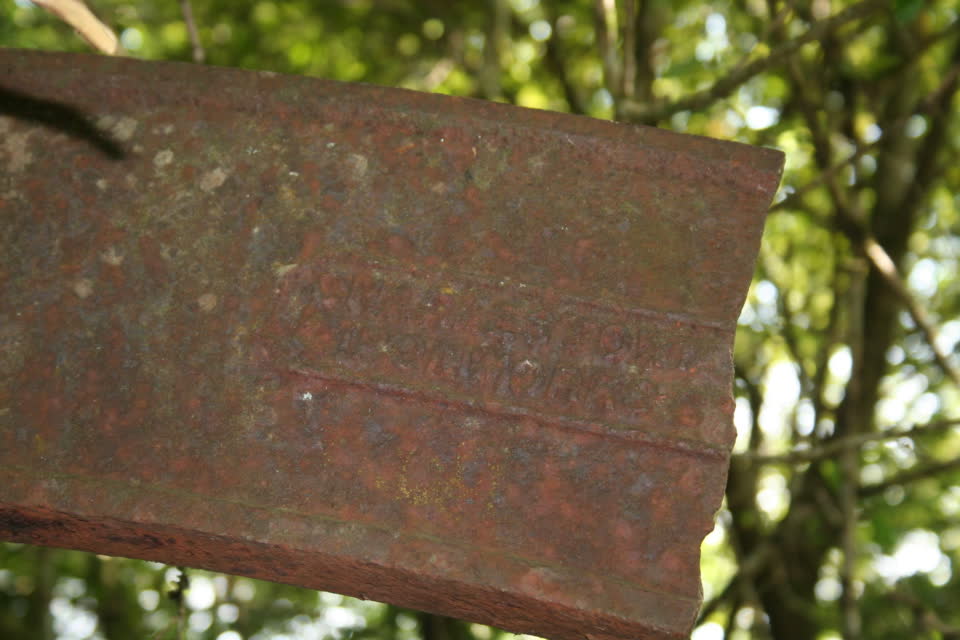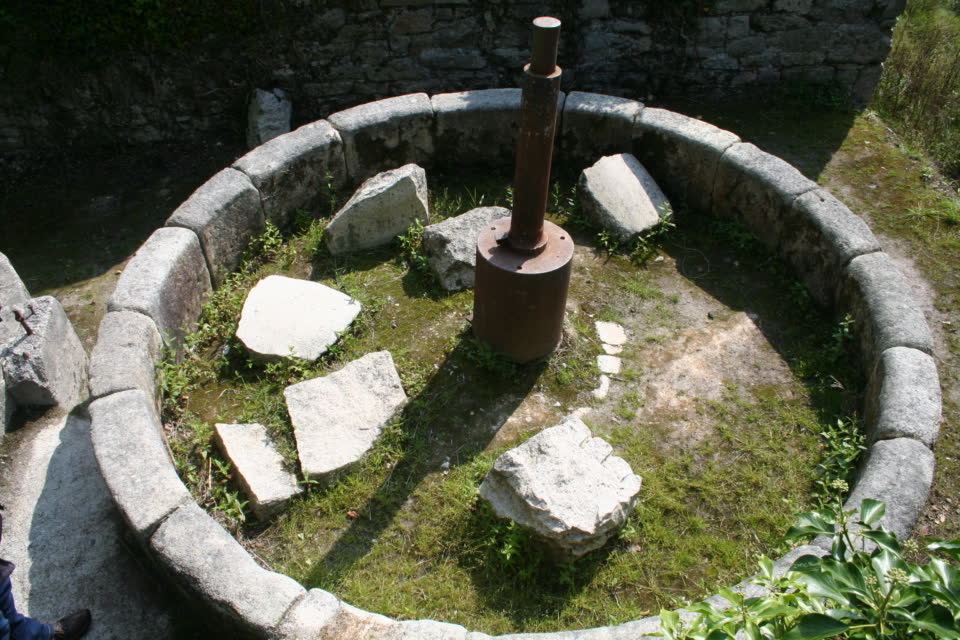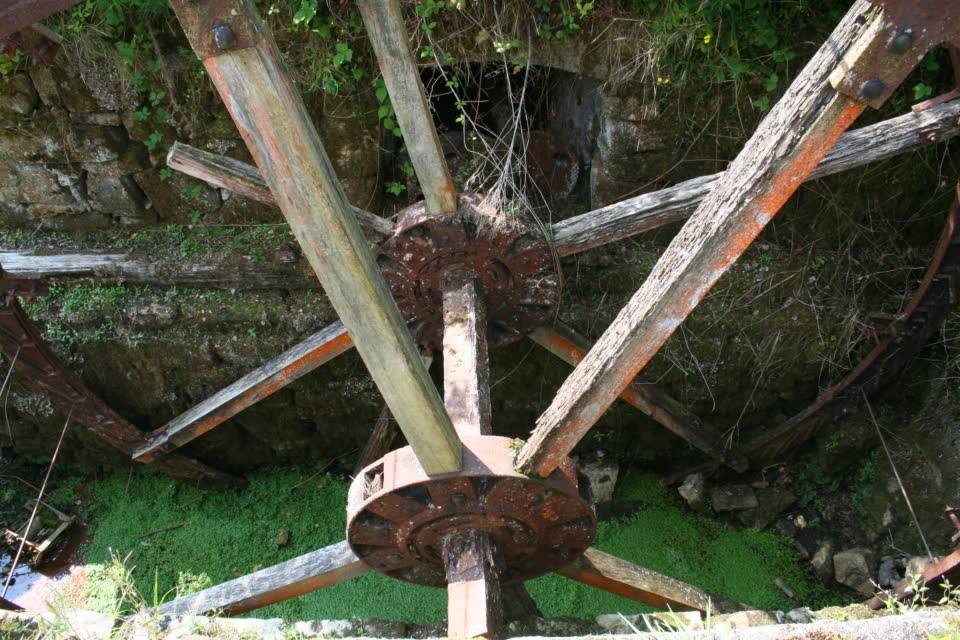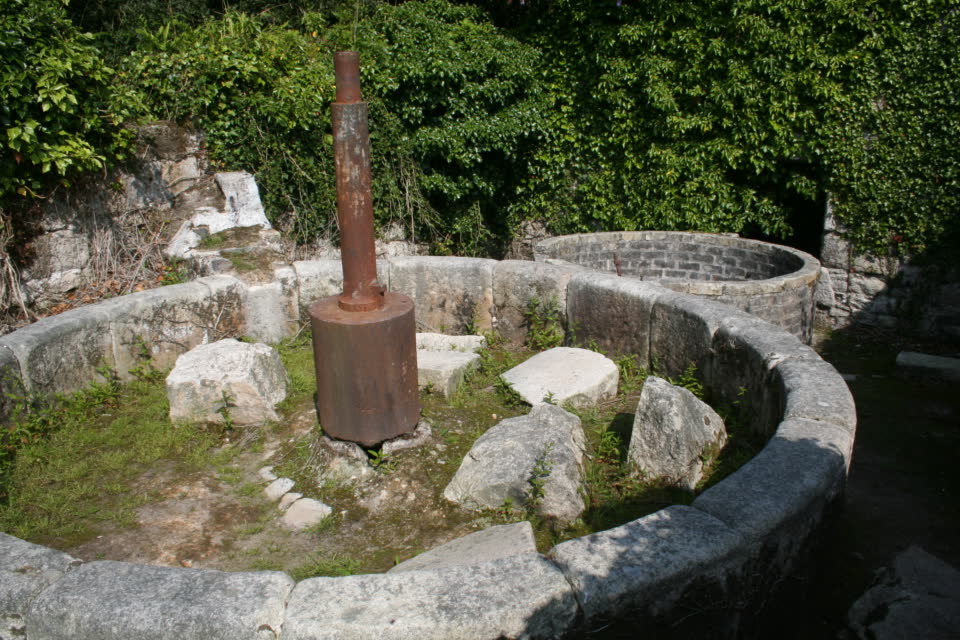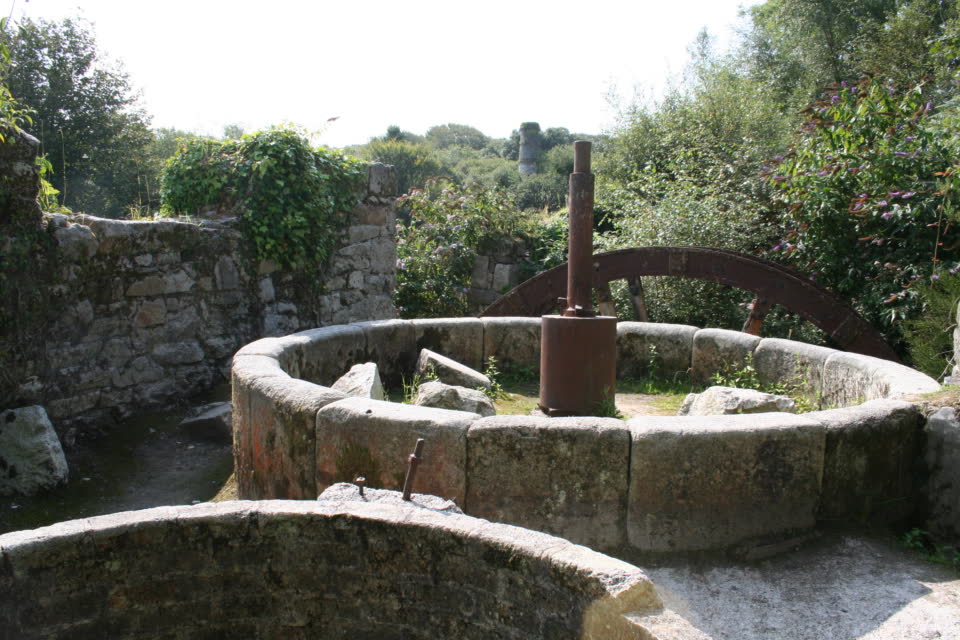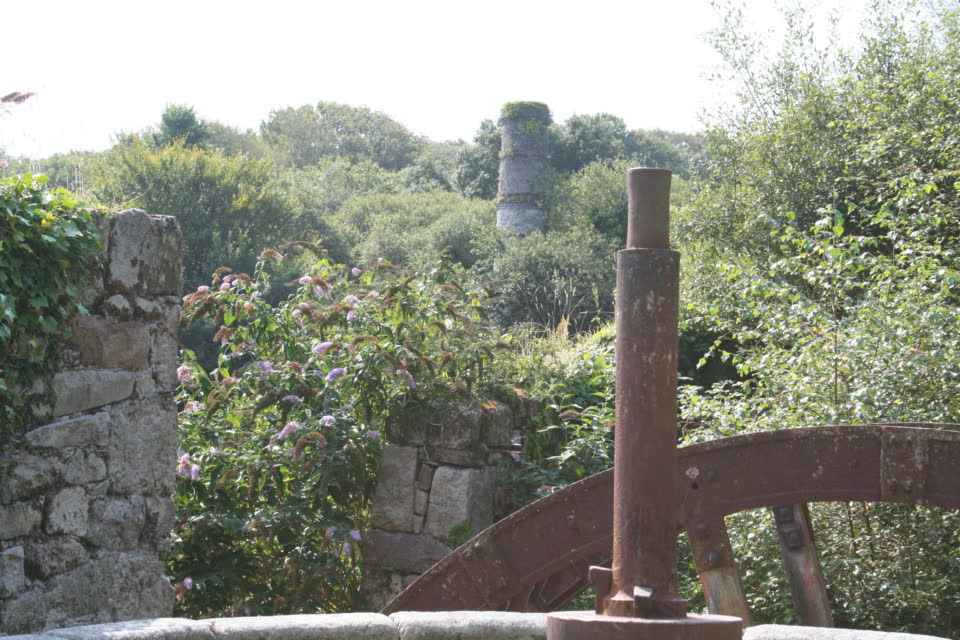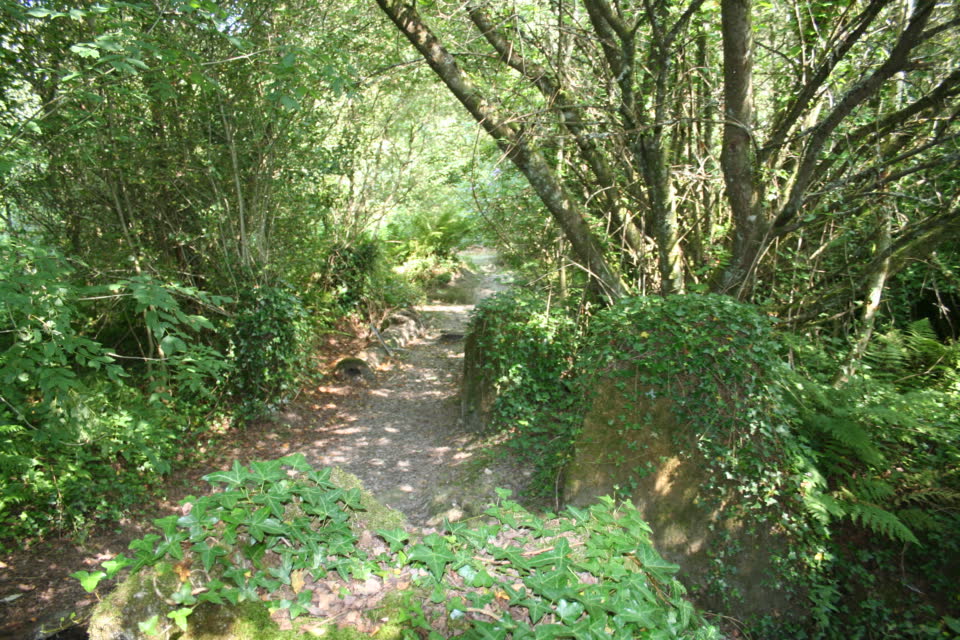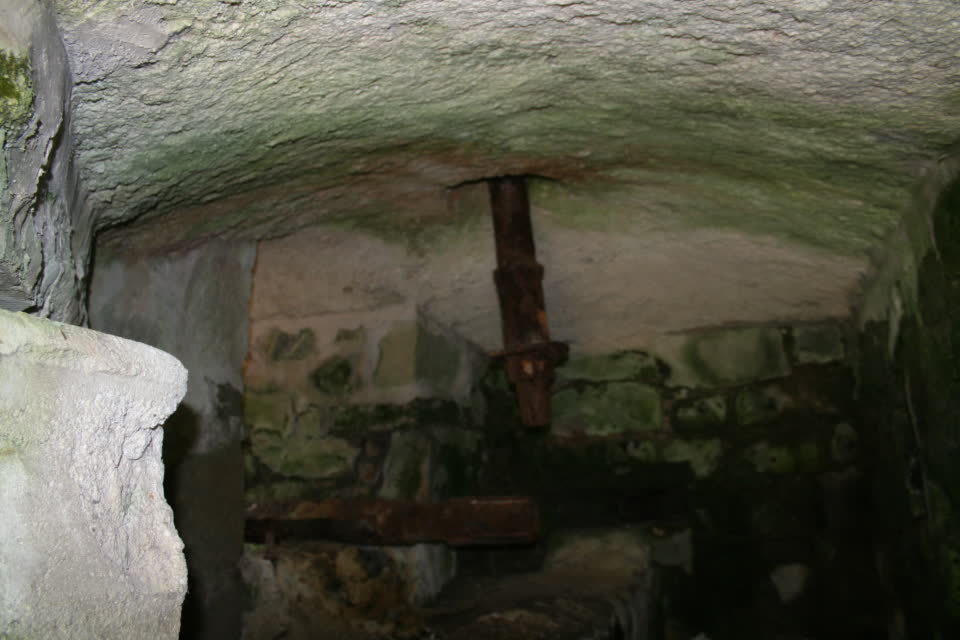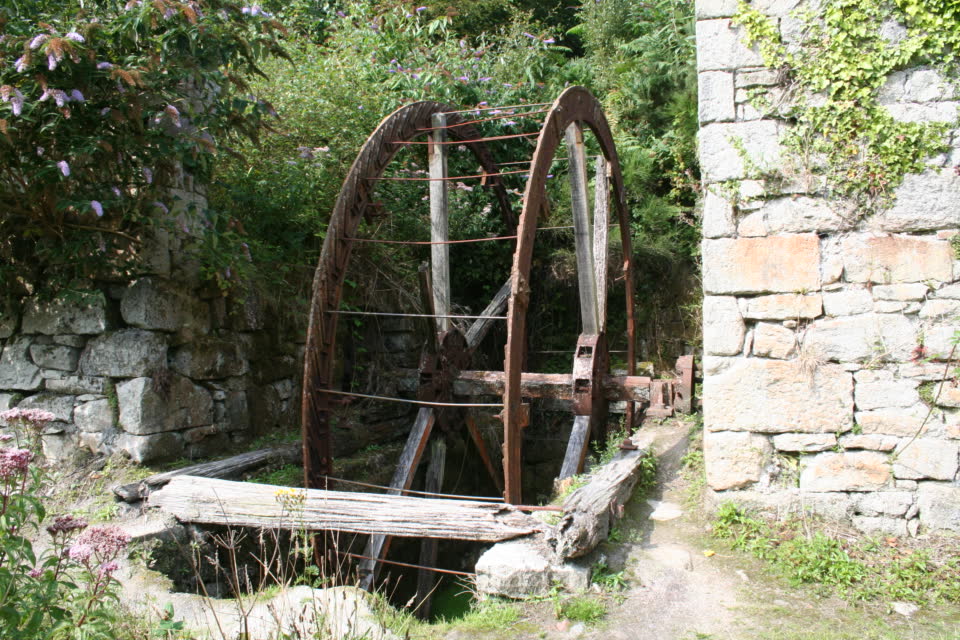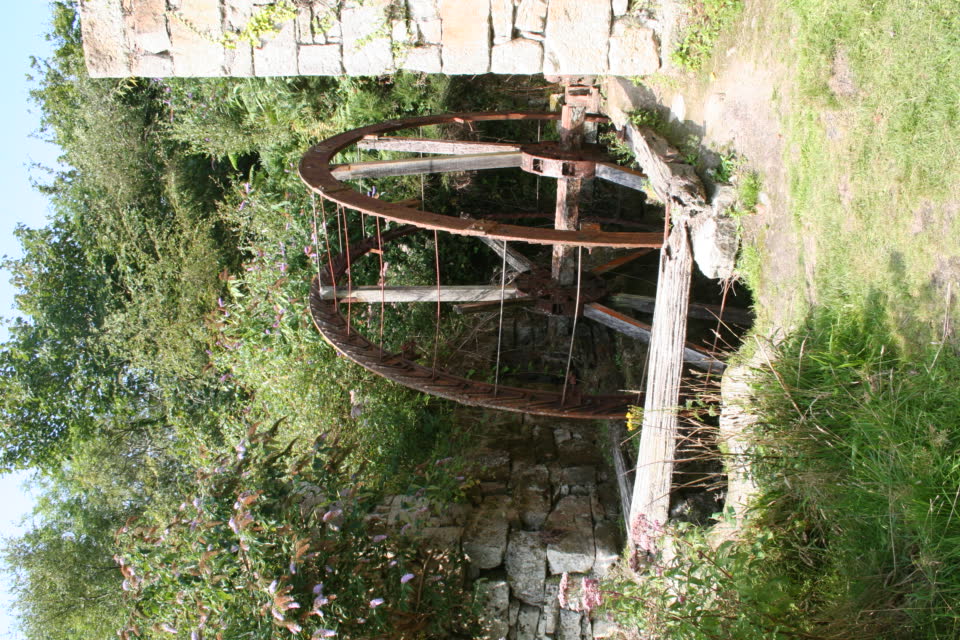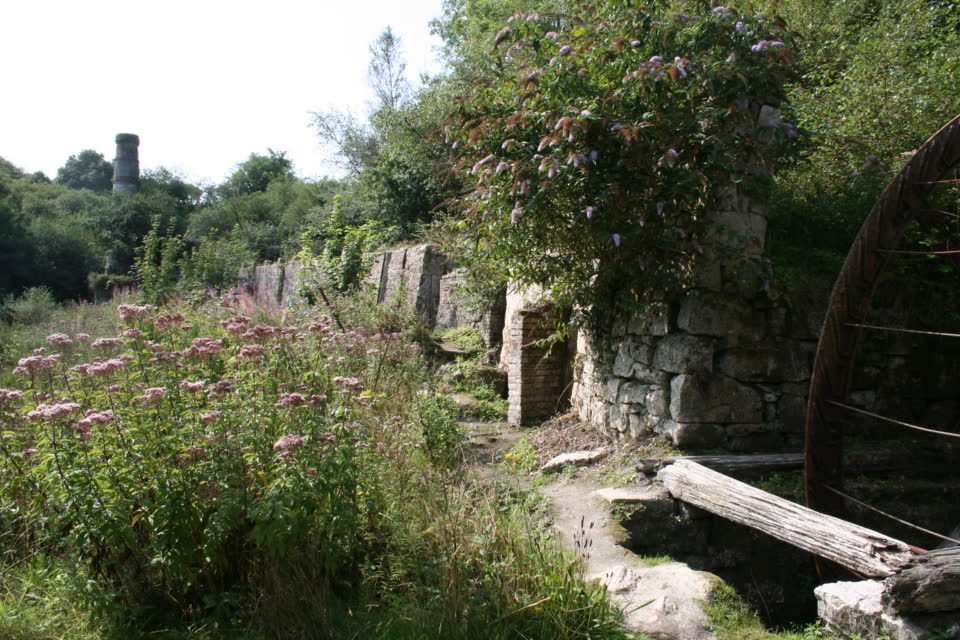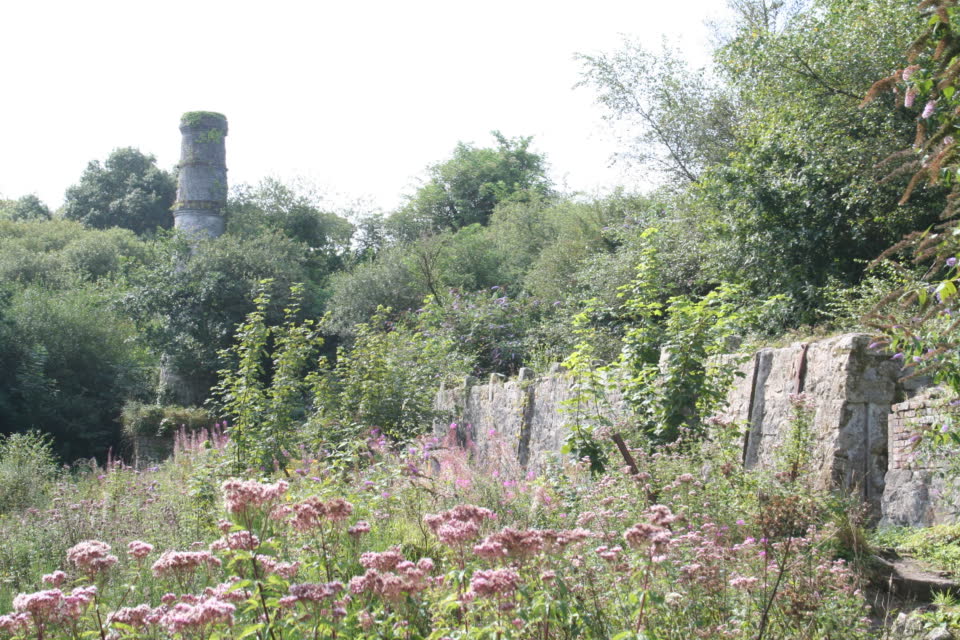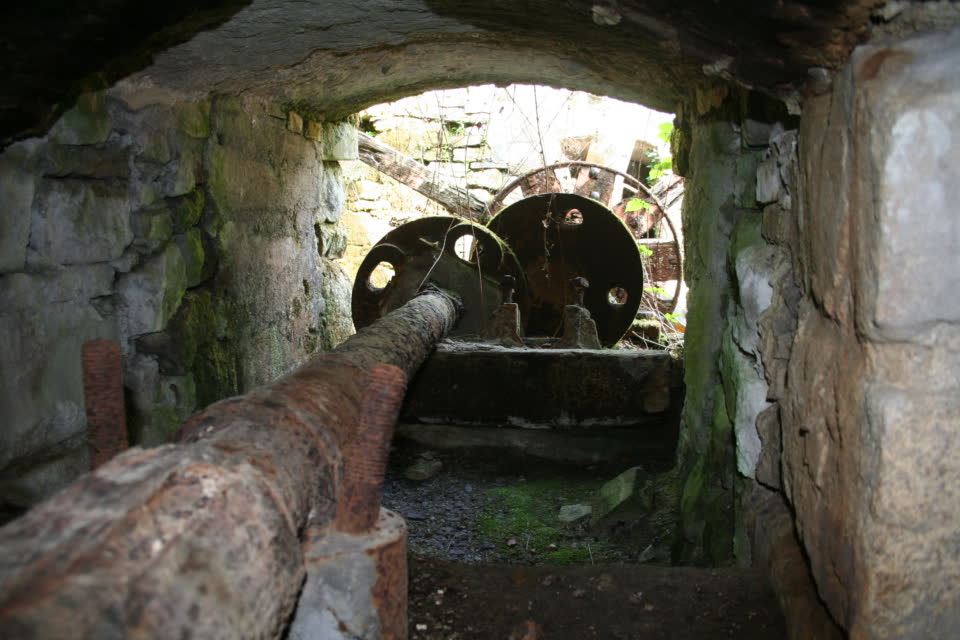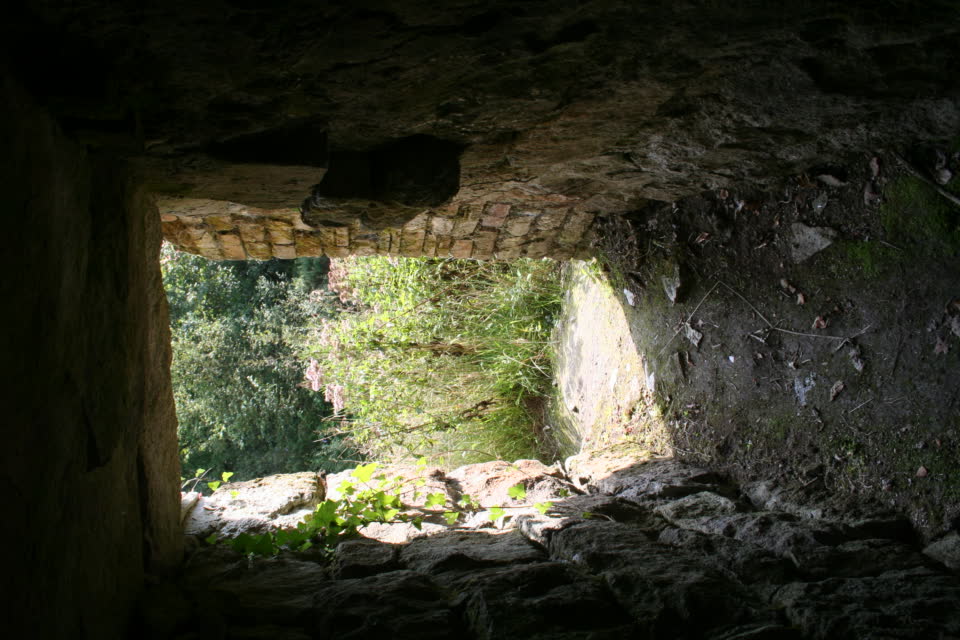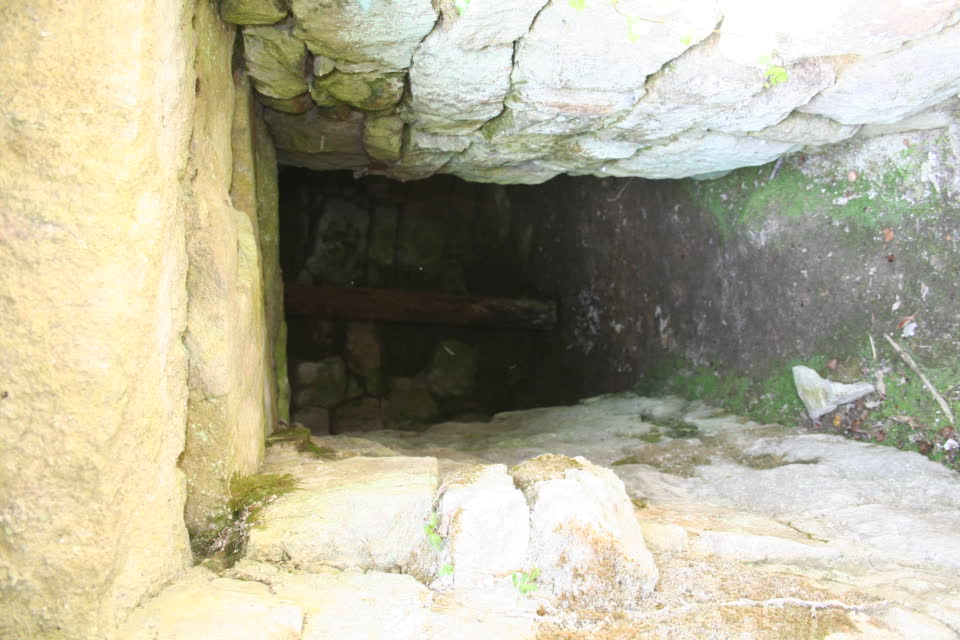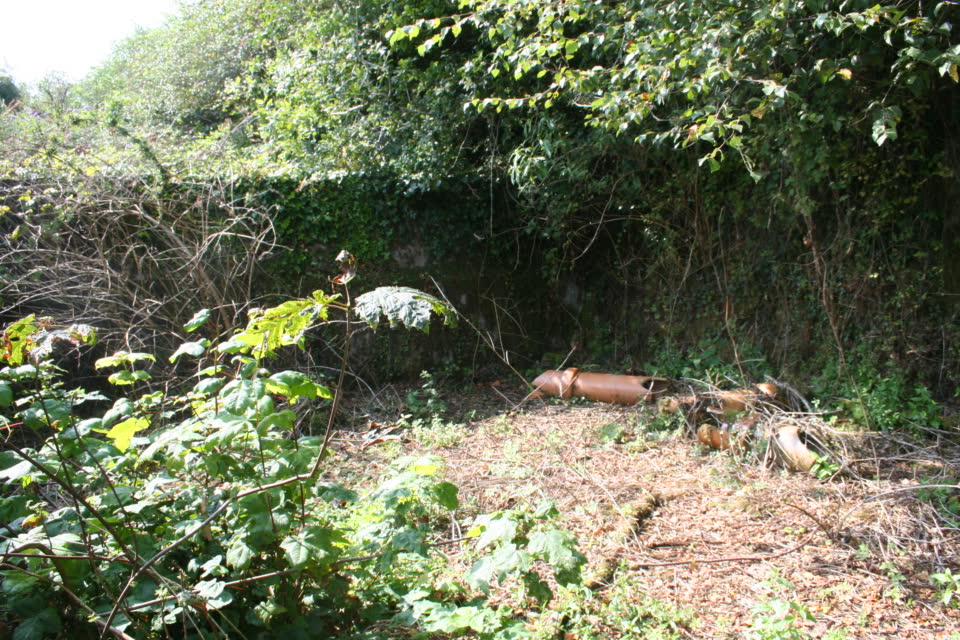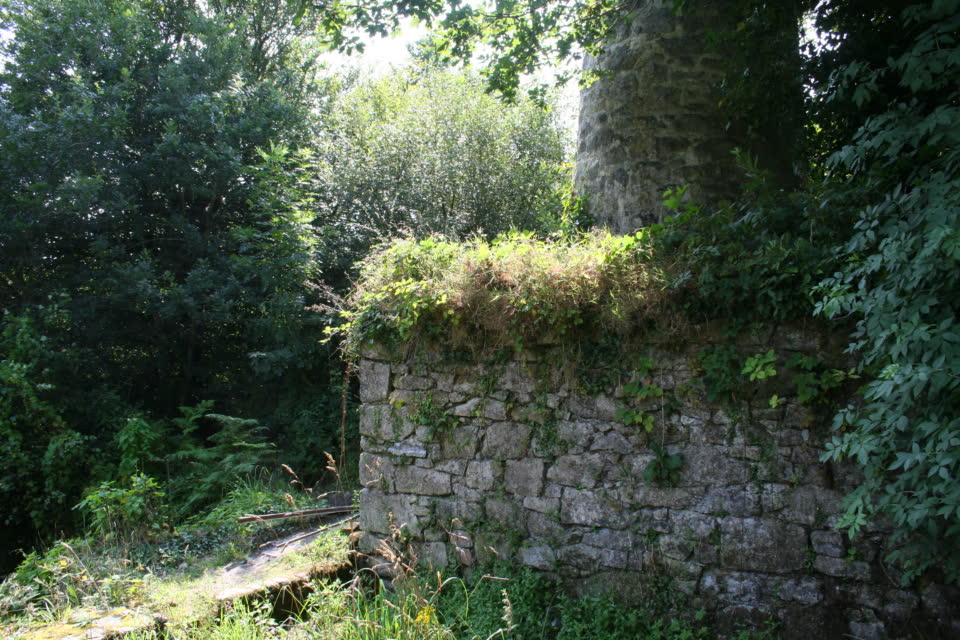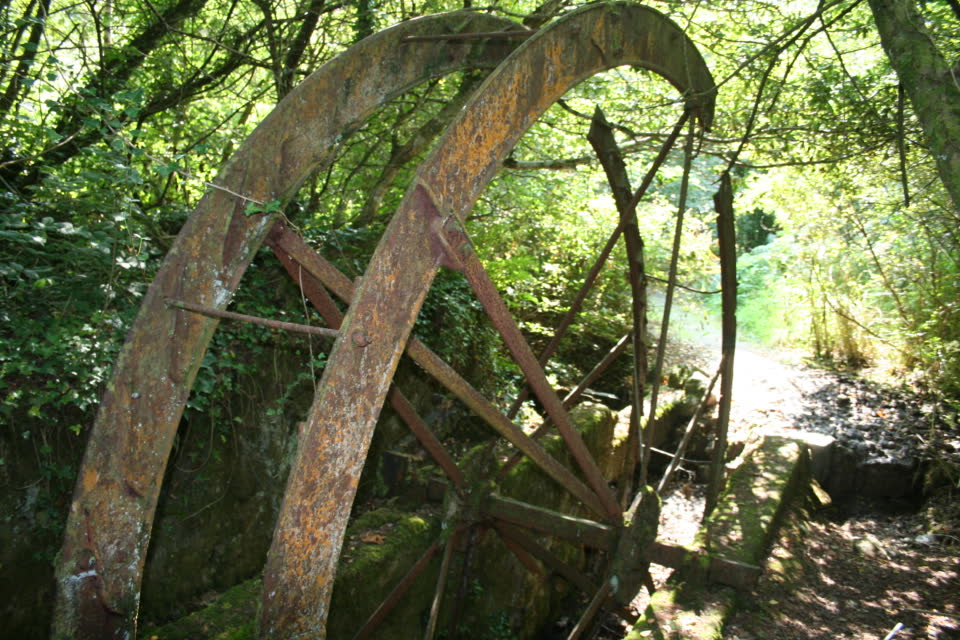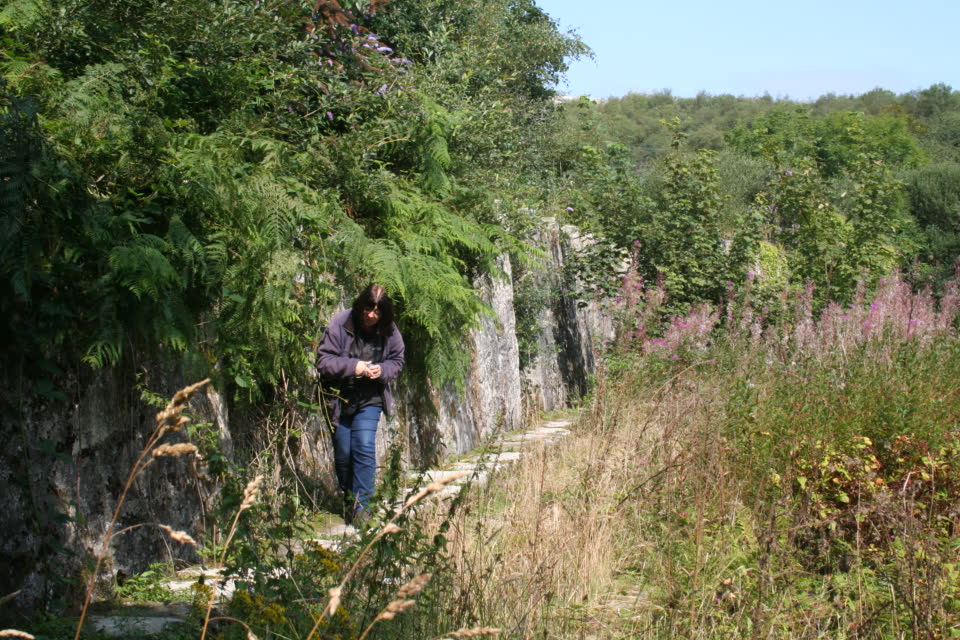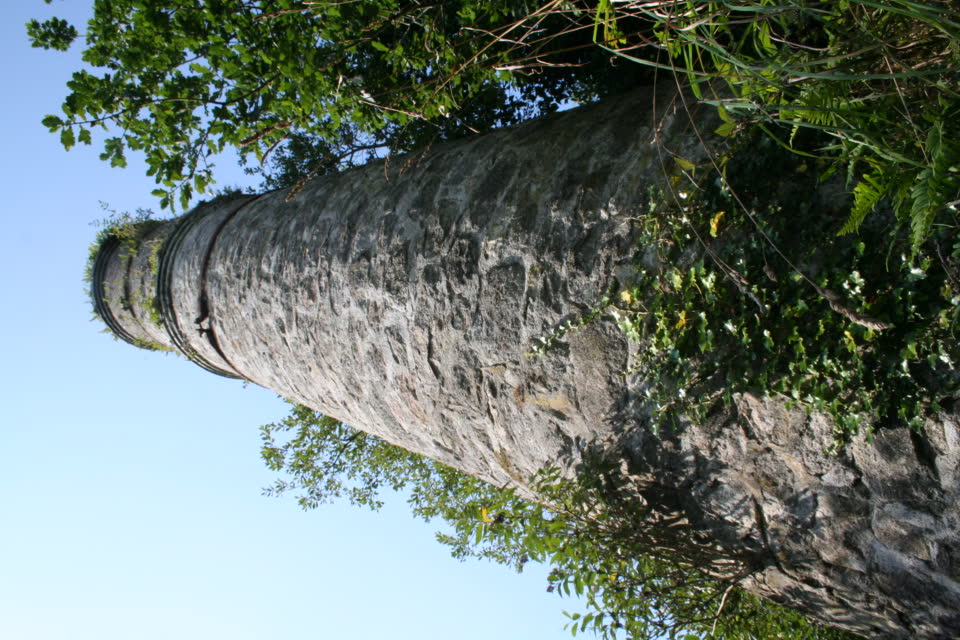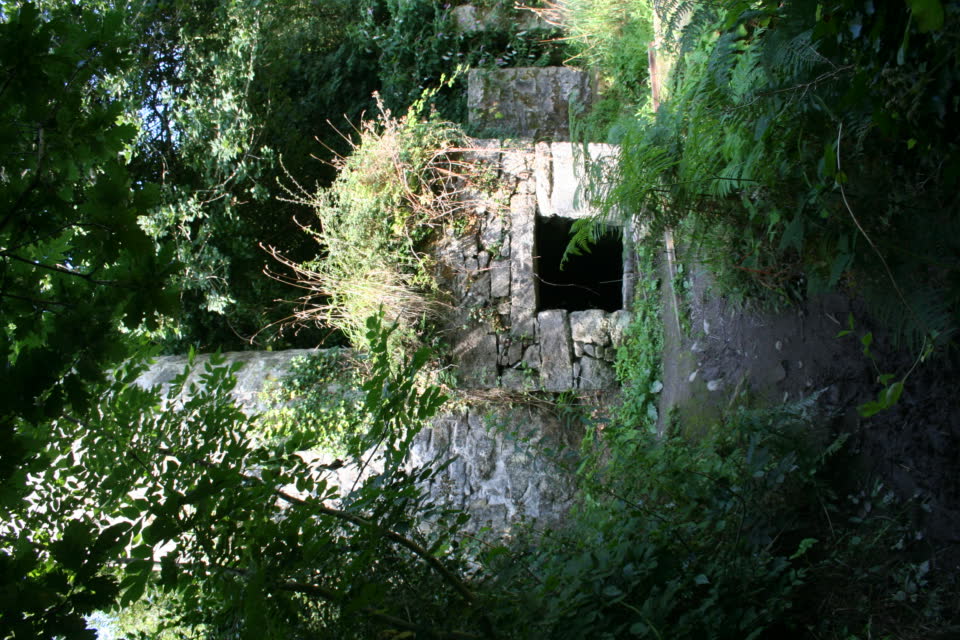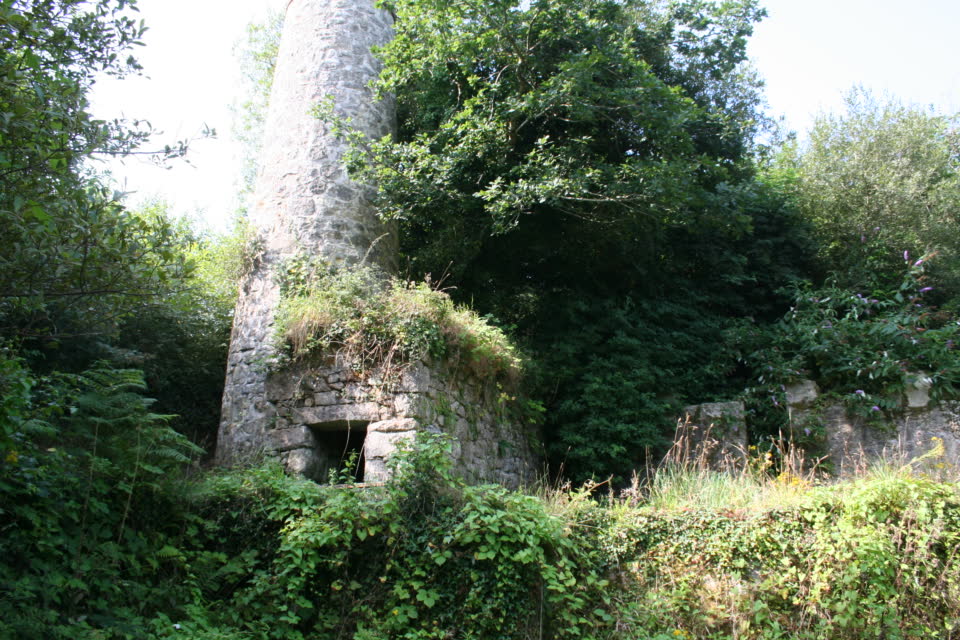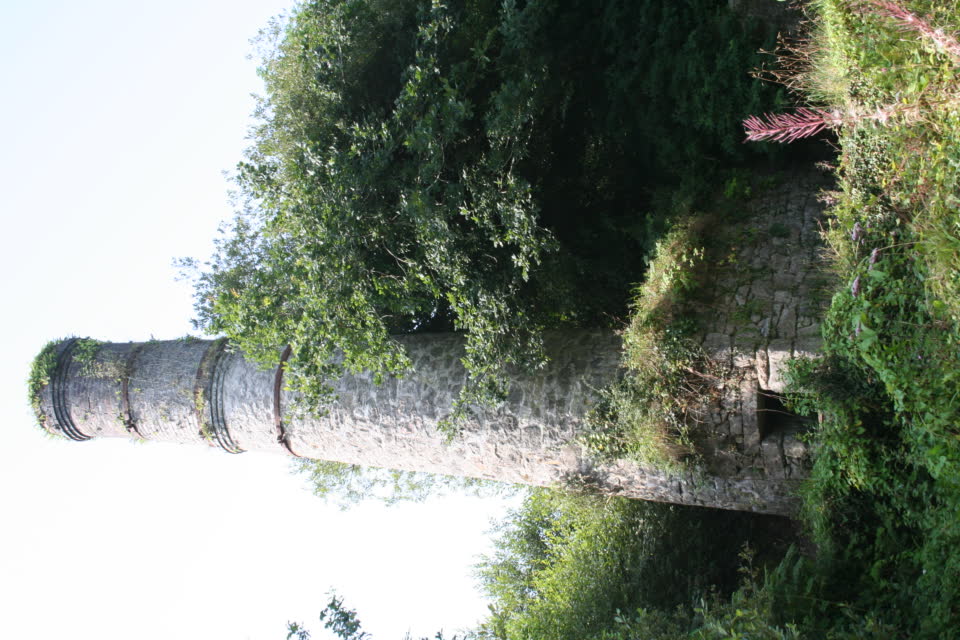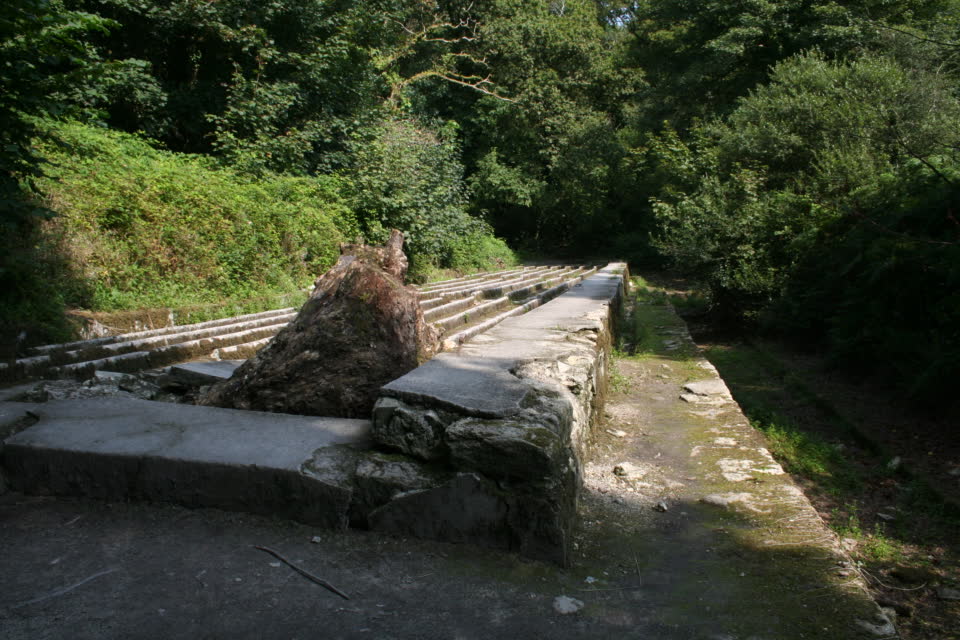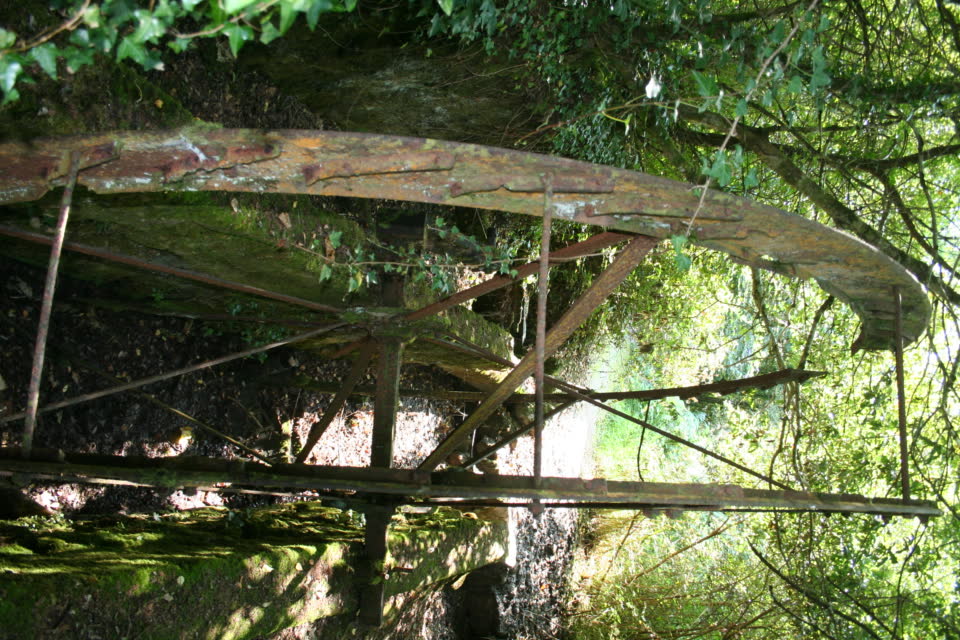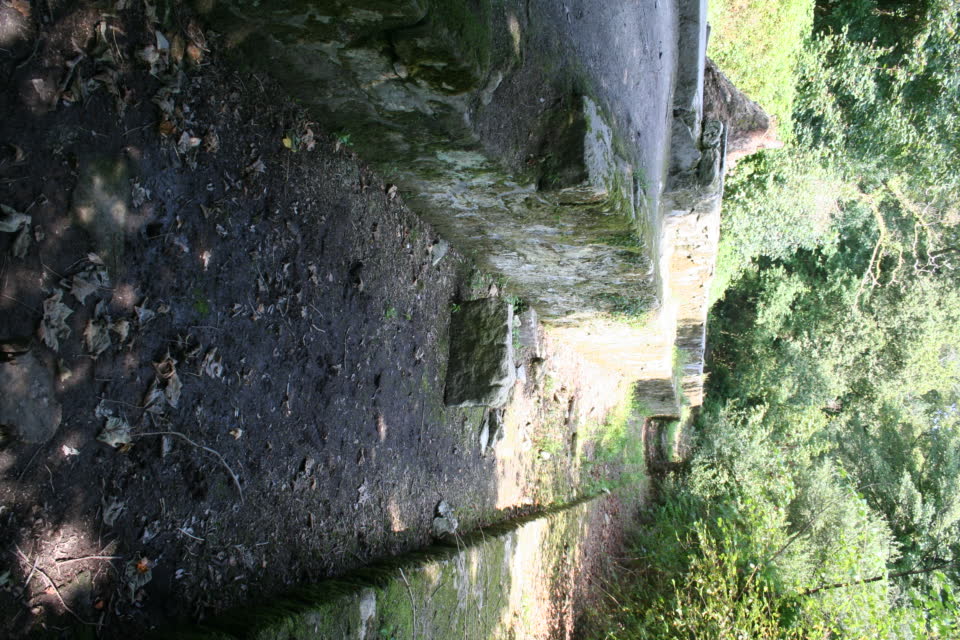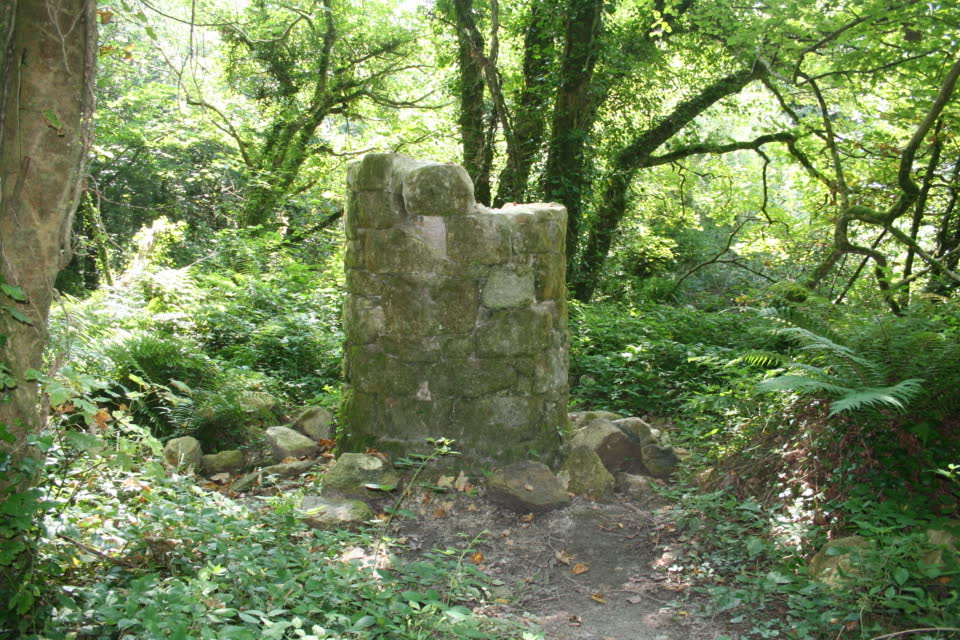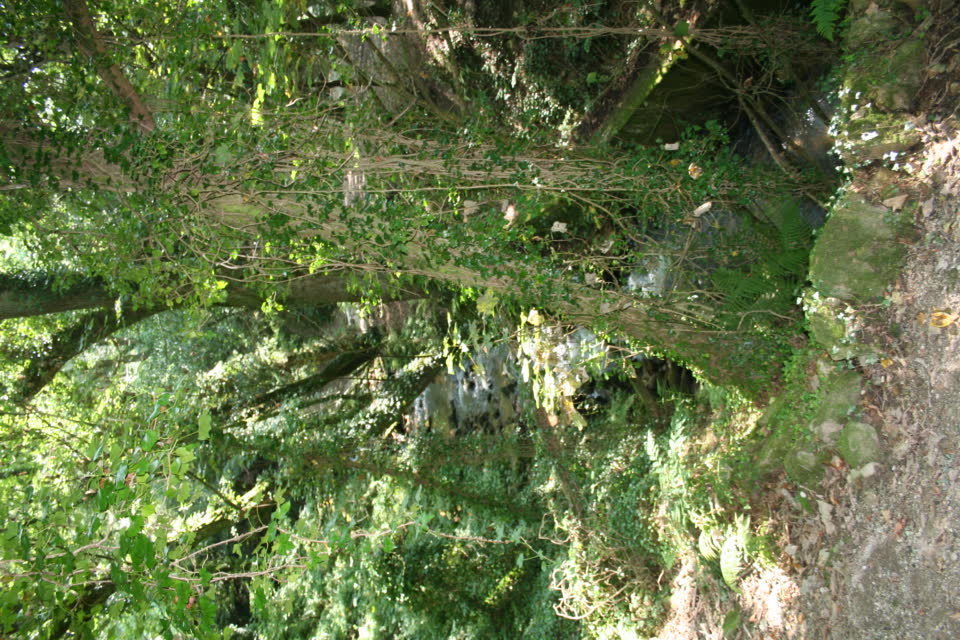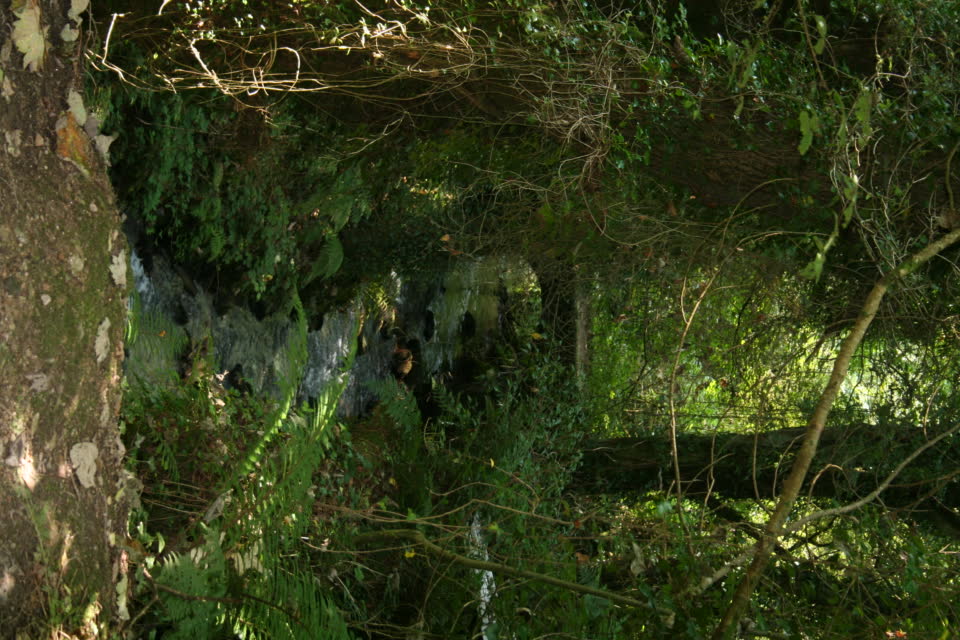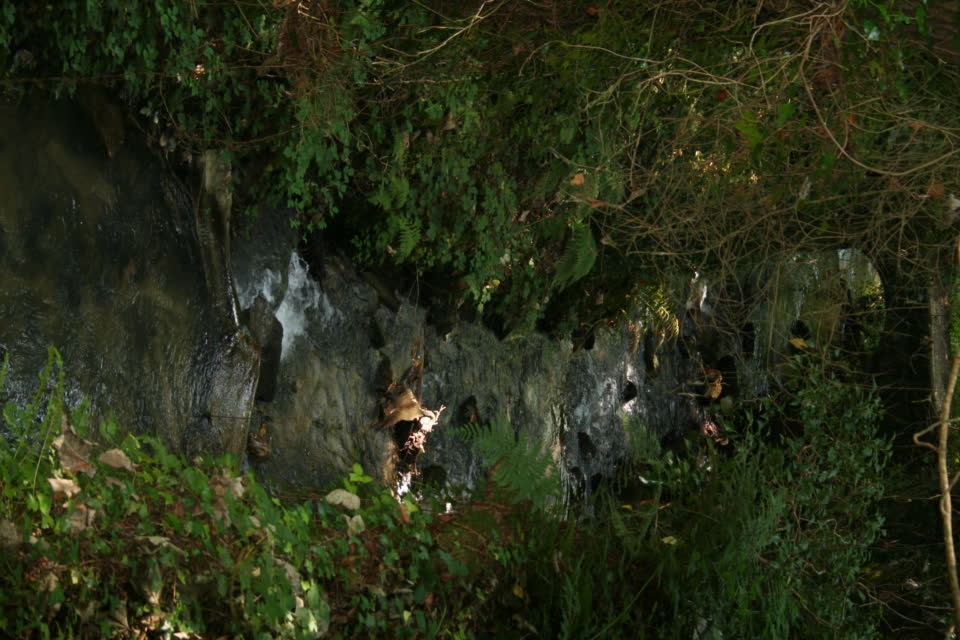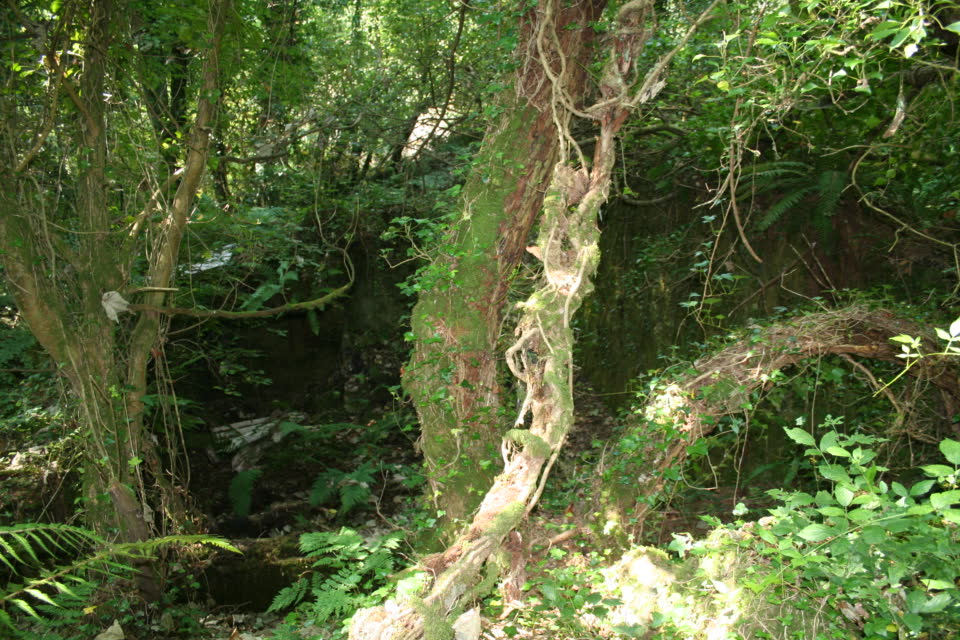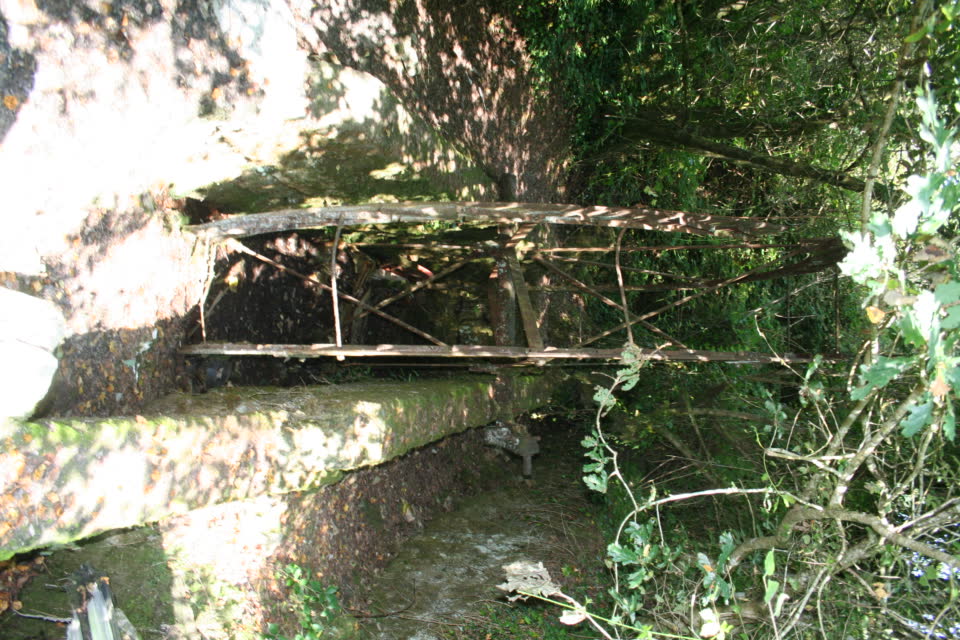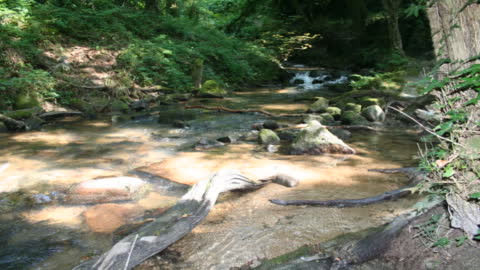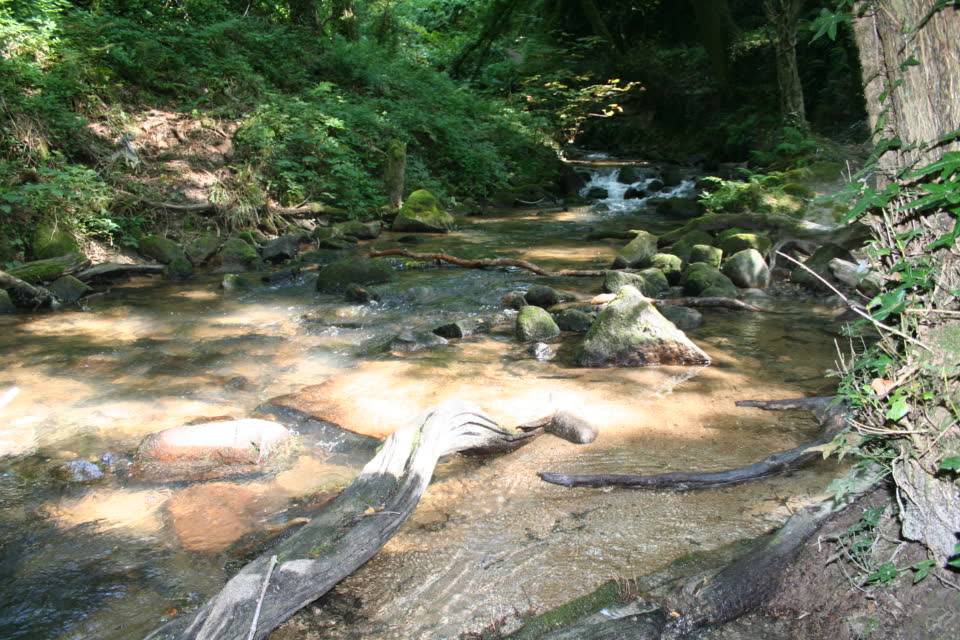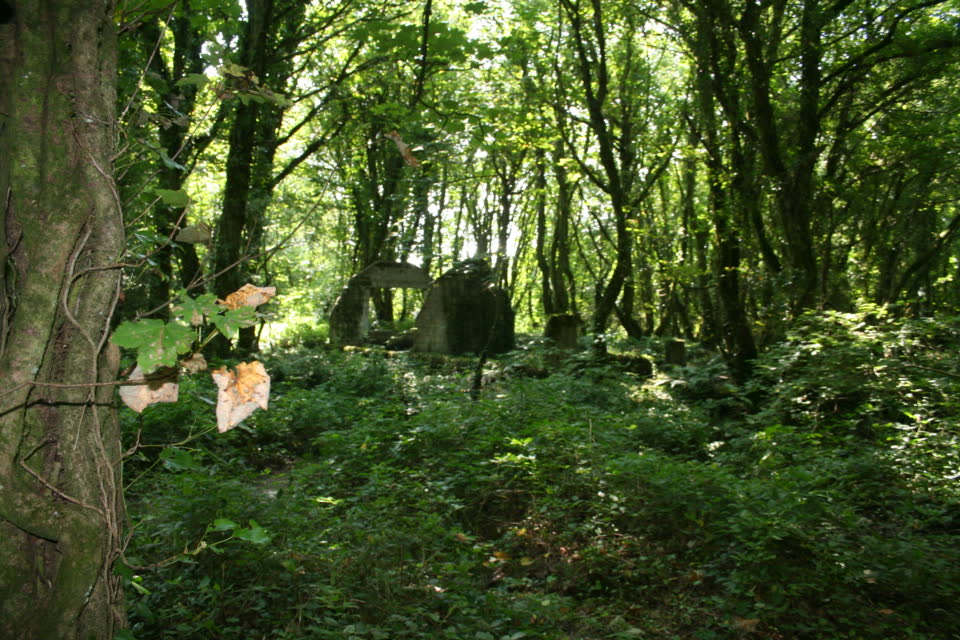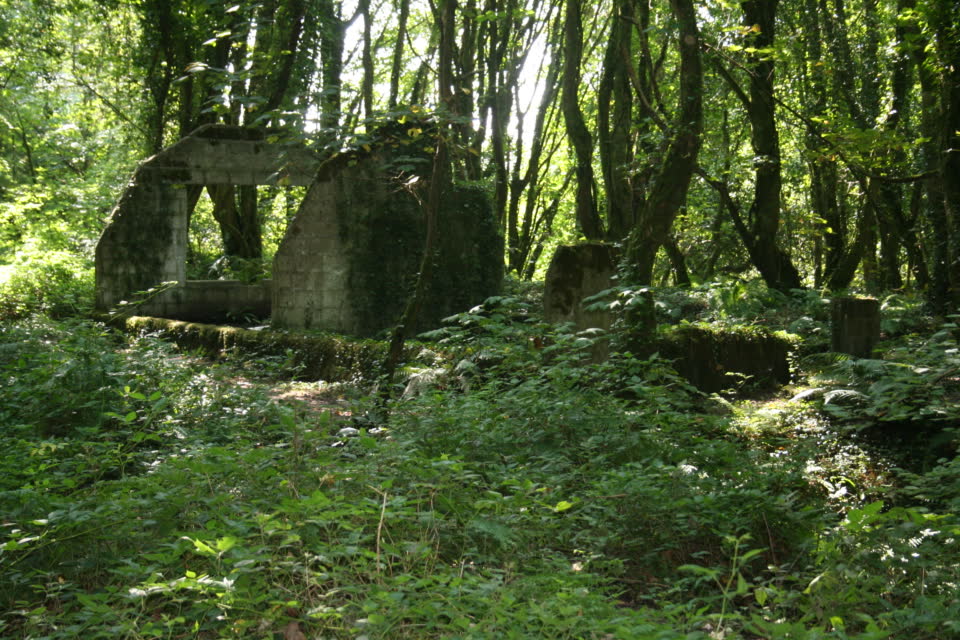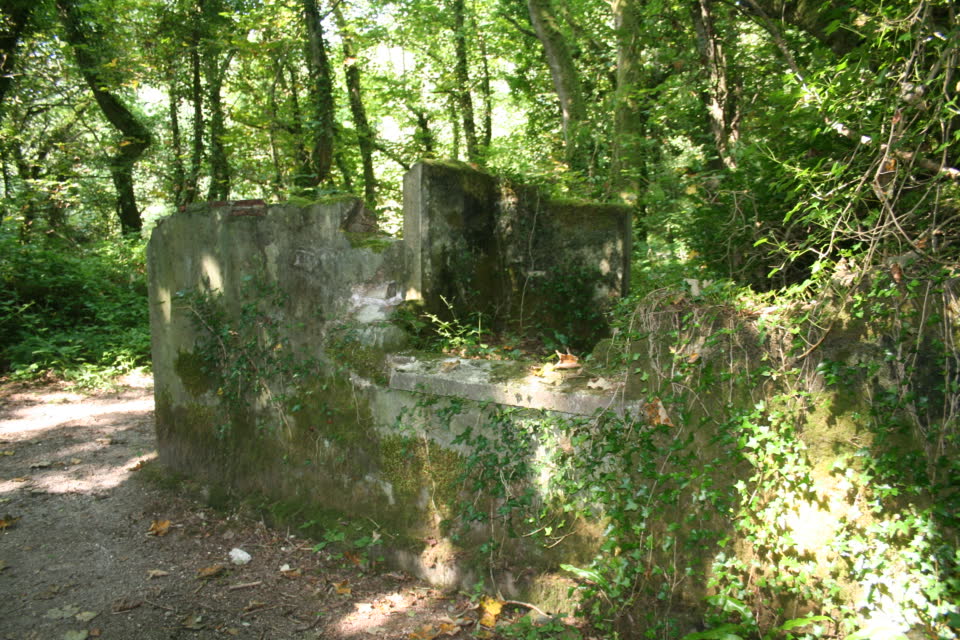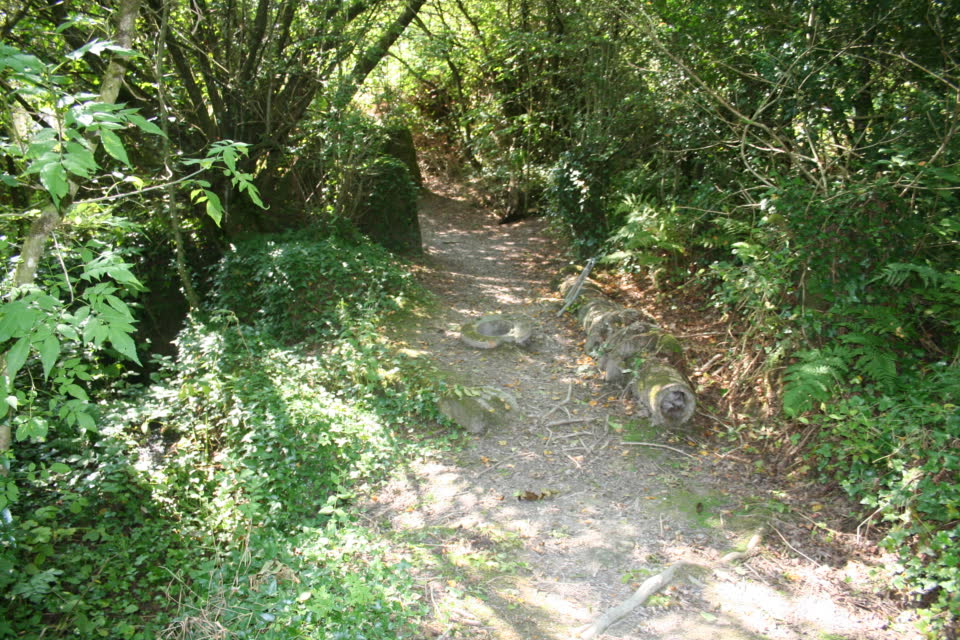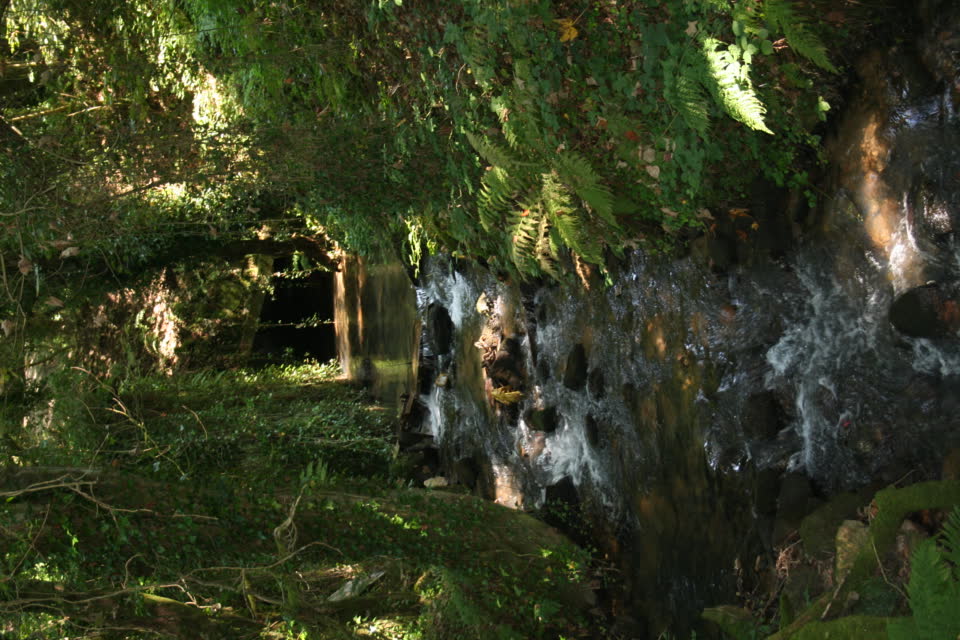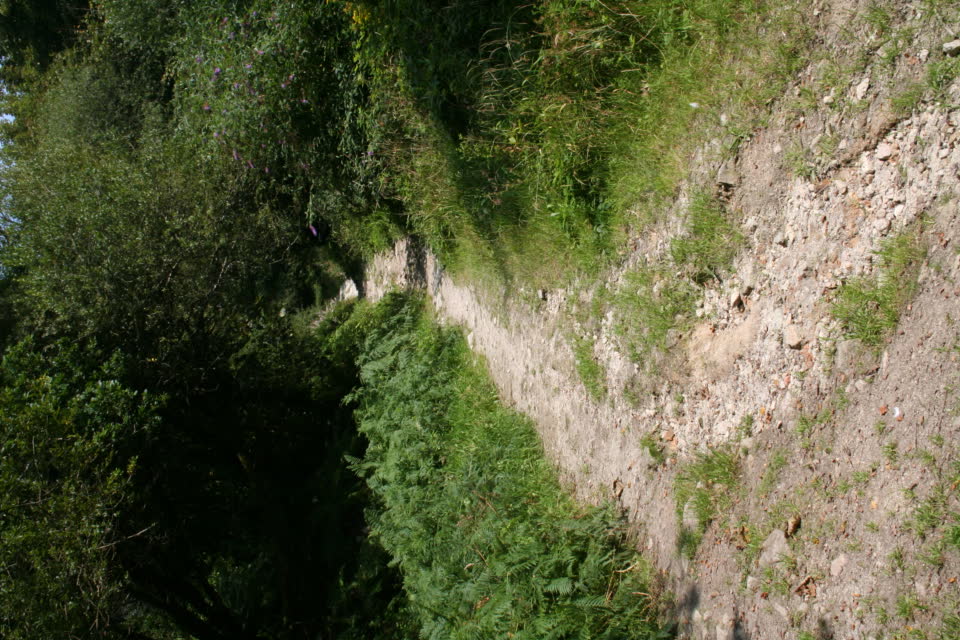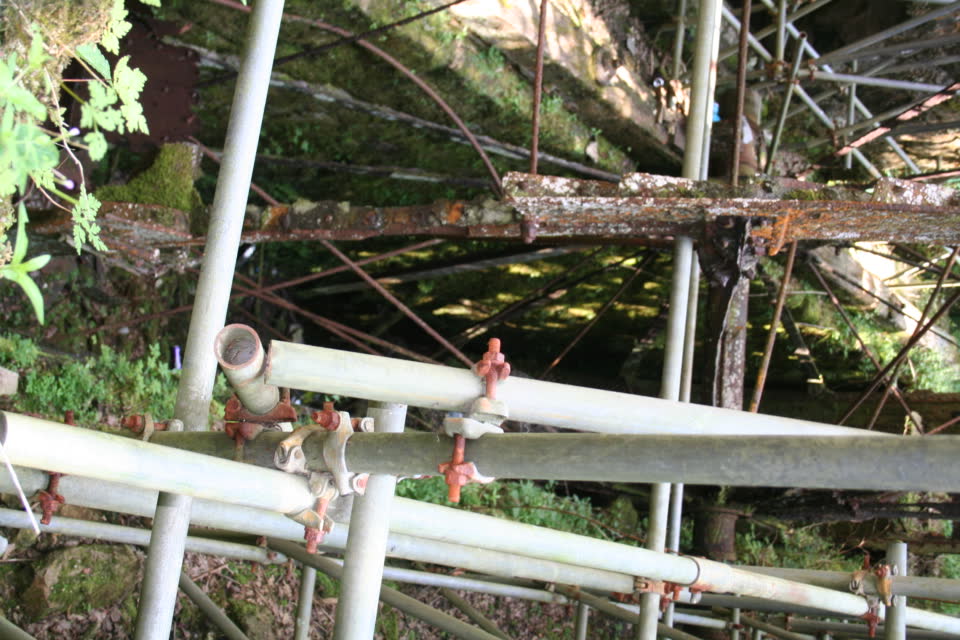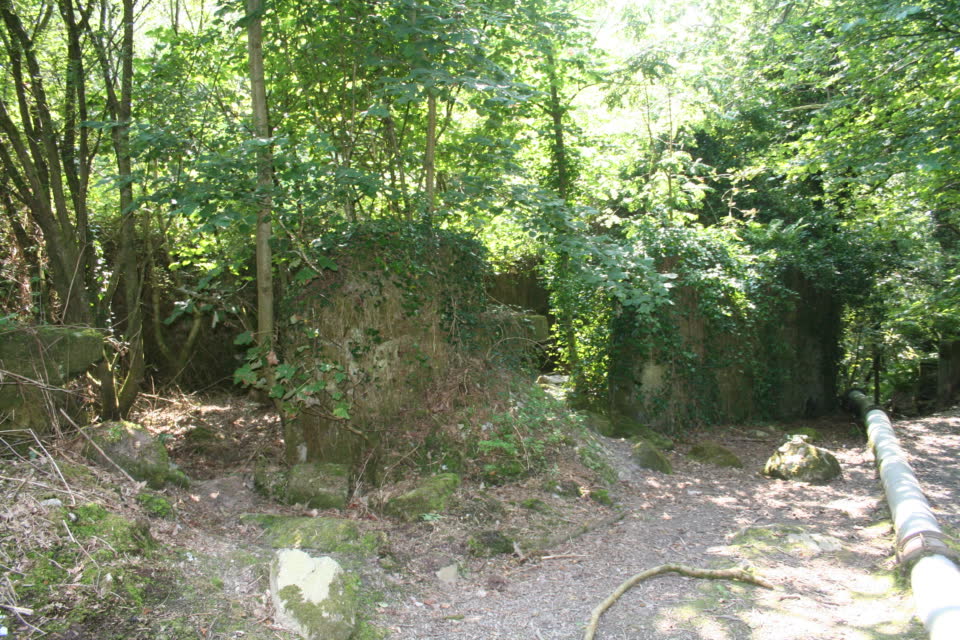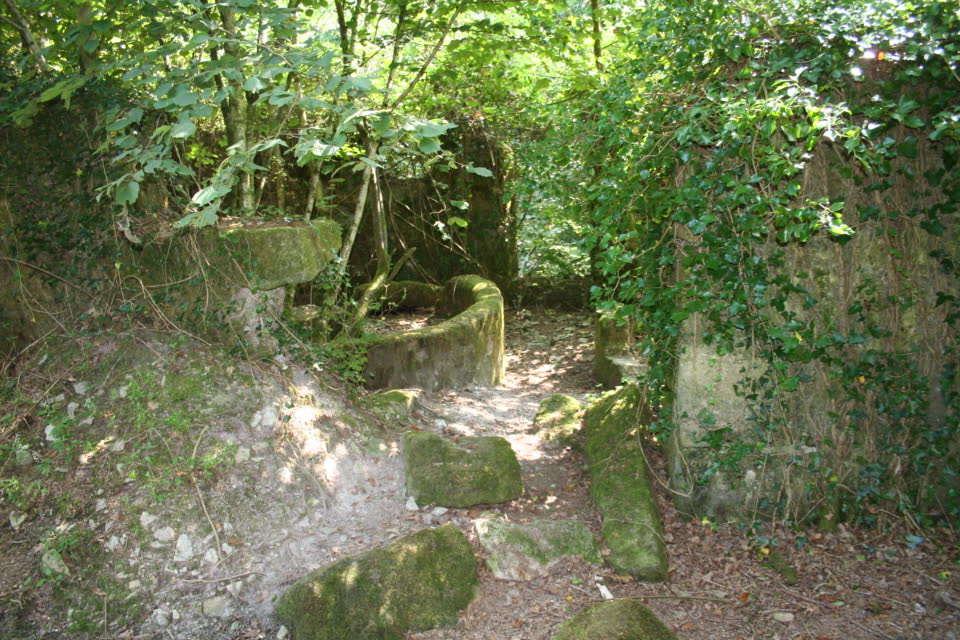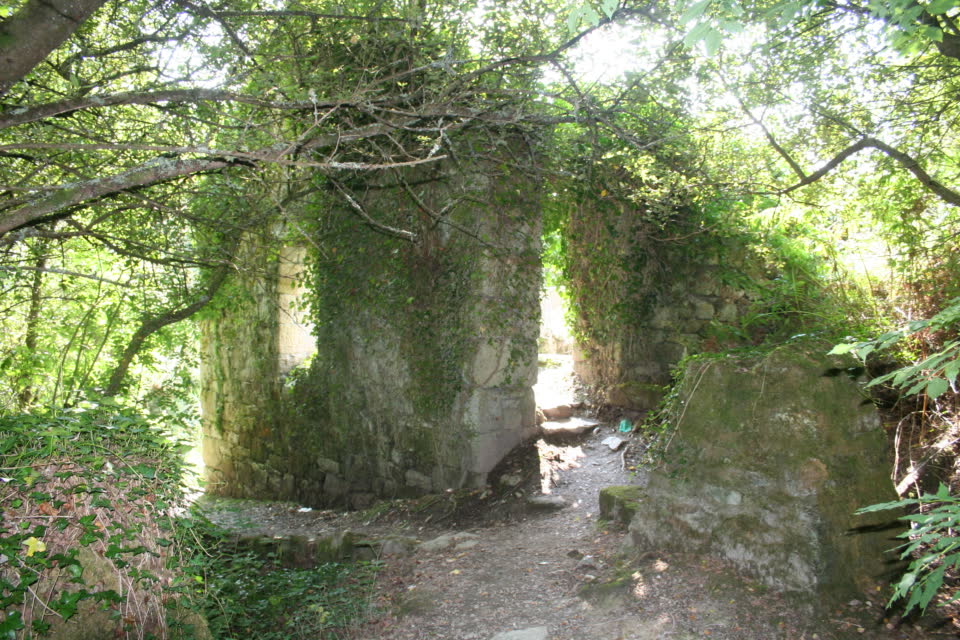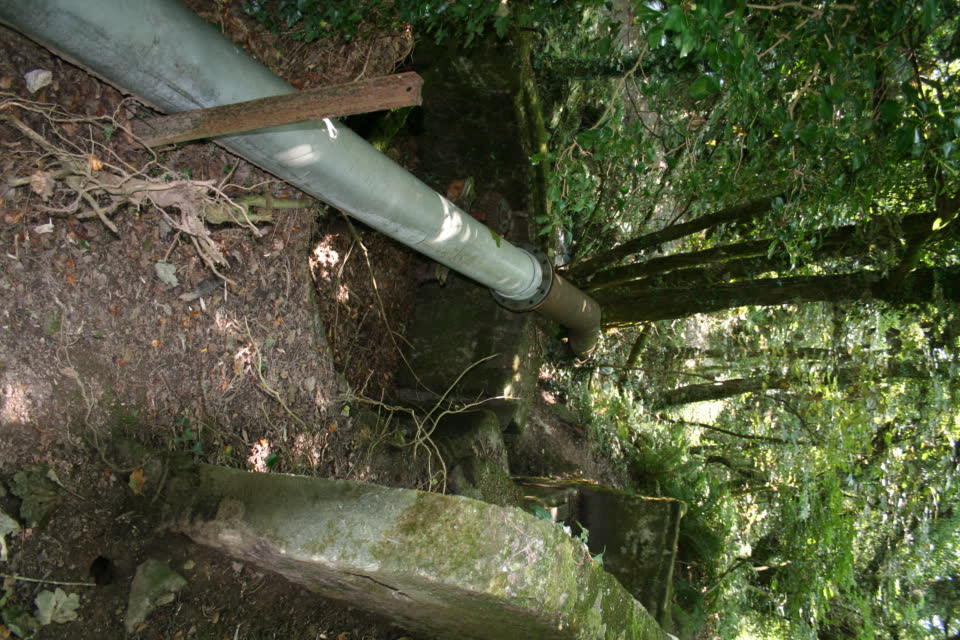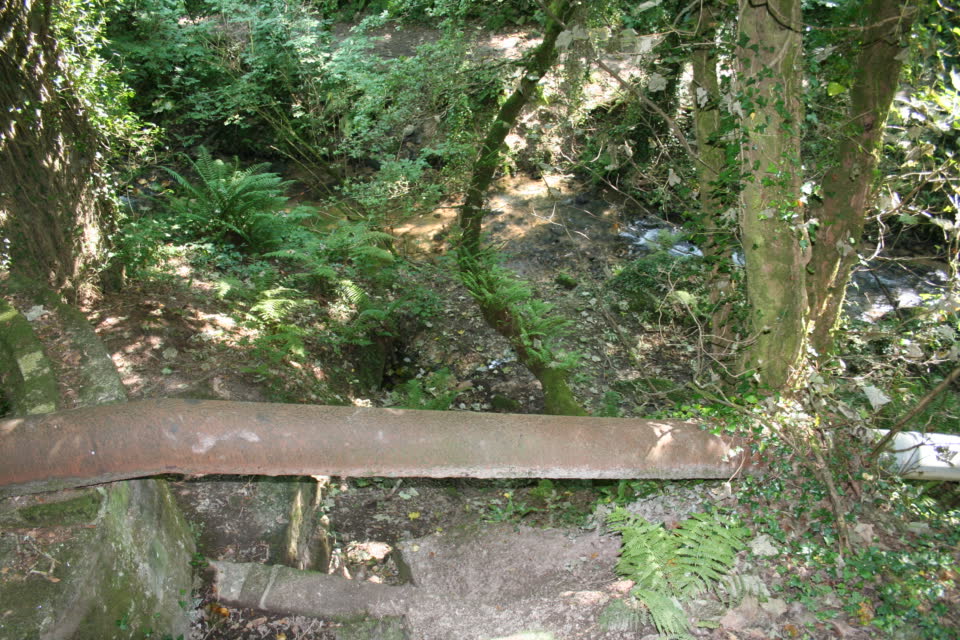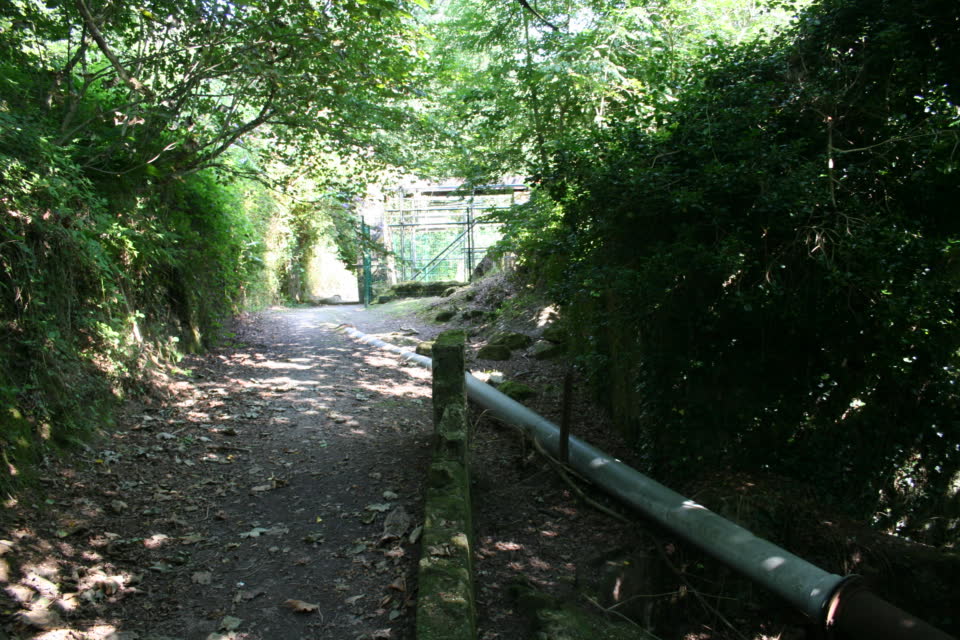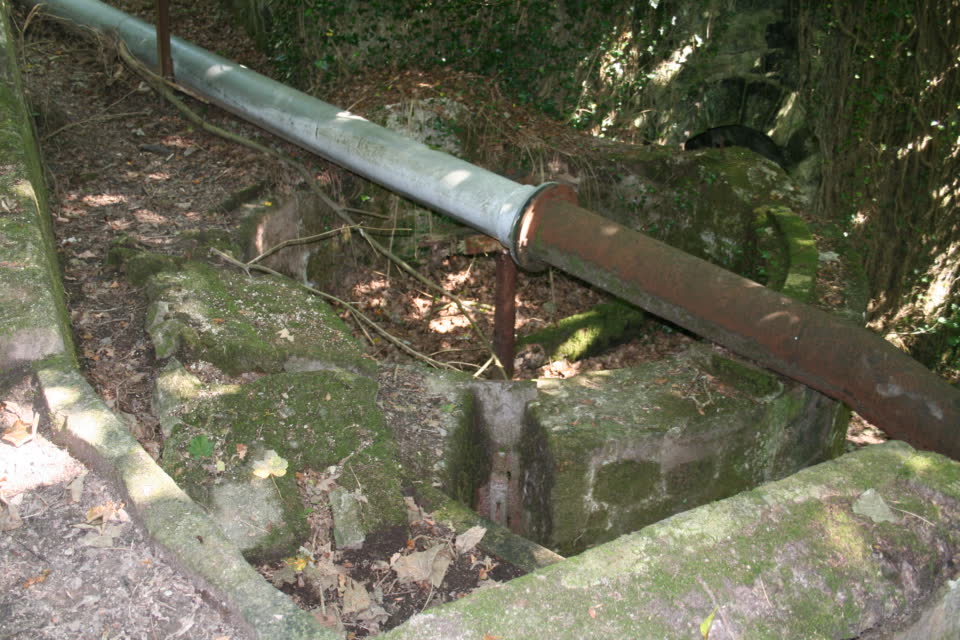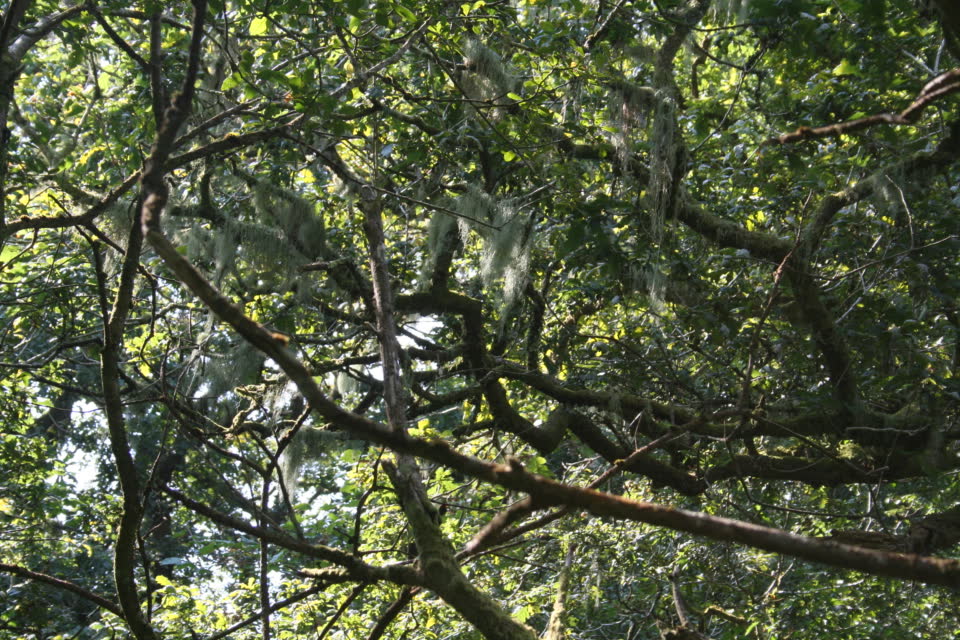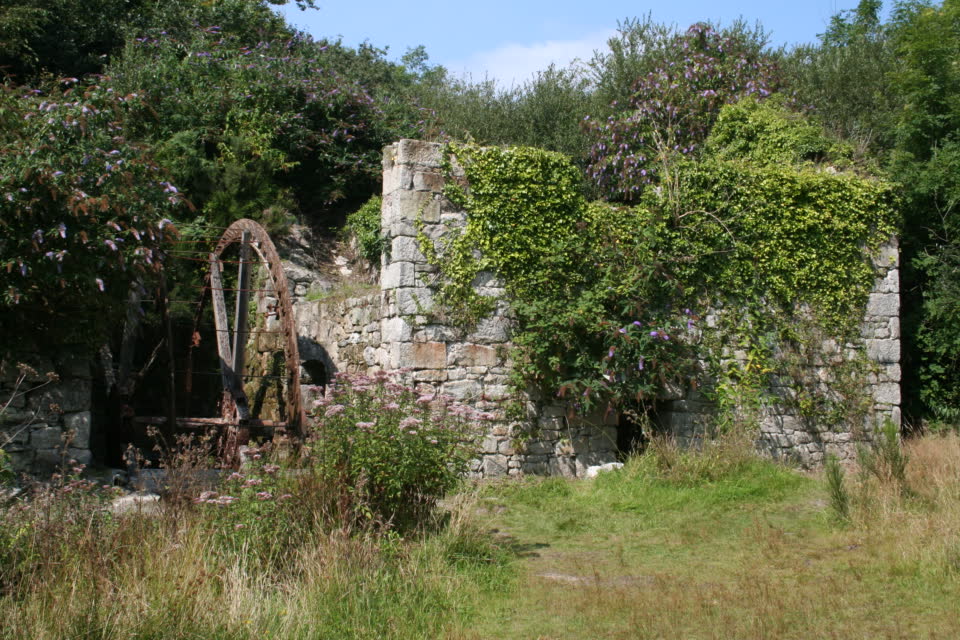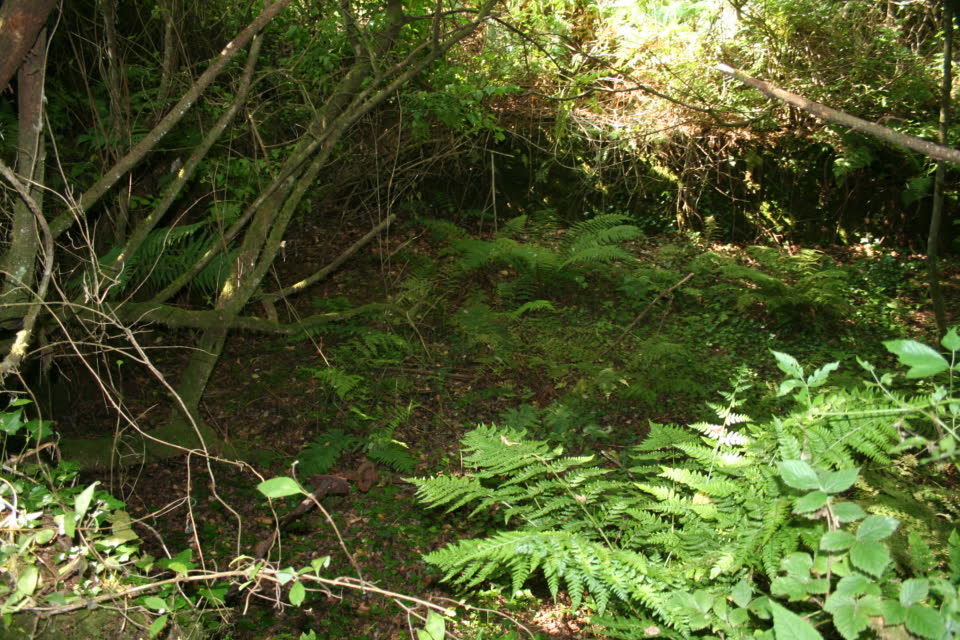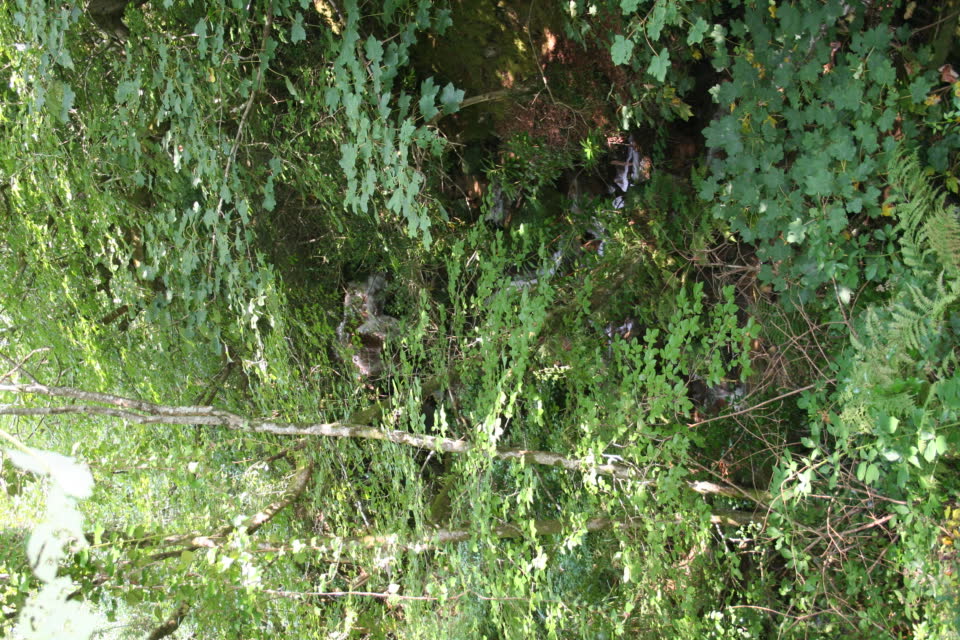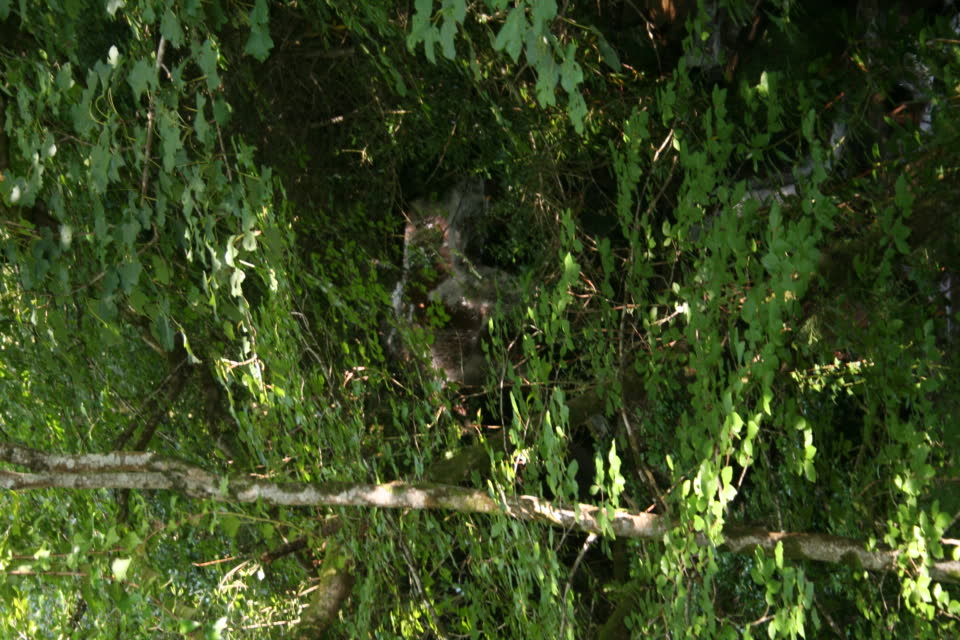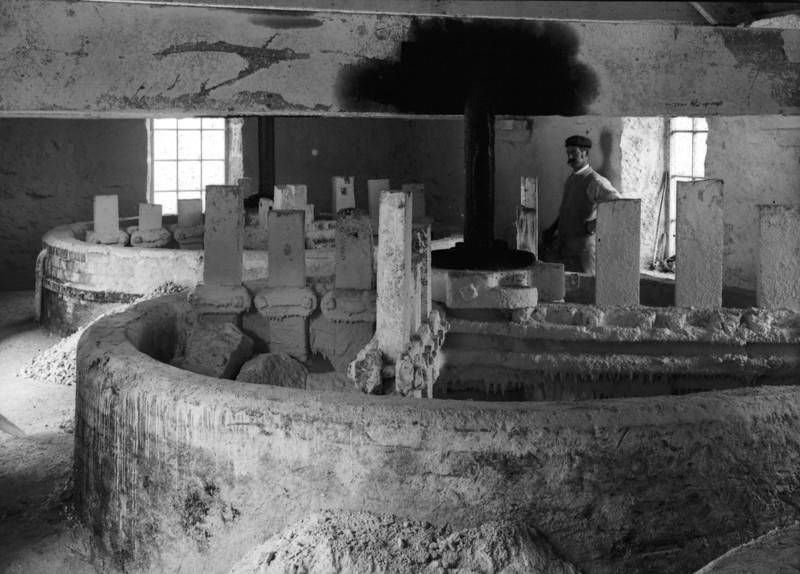TREGARGUS MILL
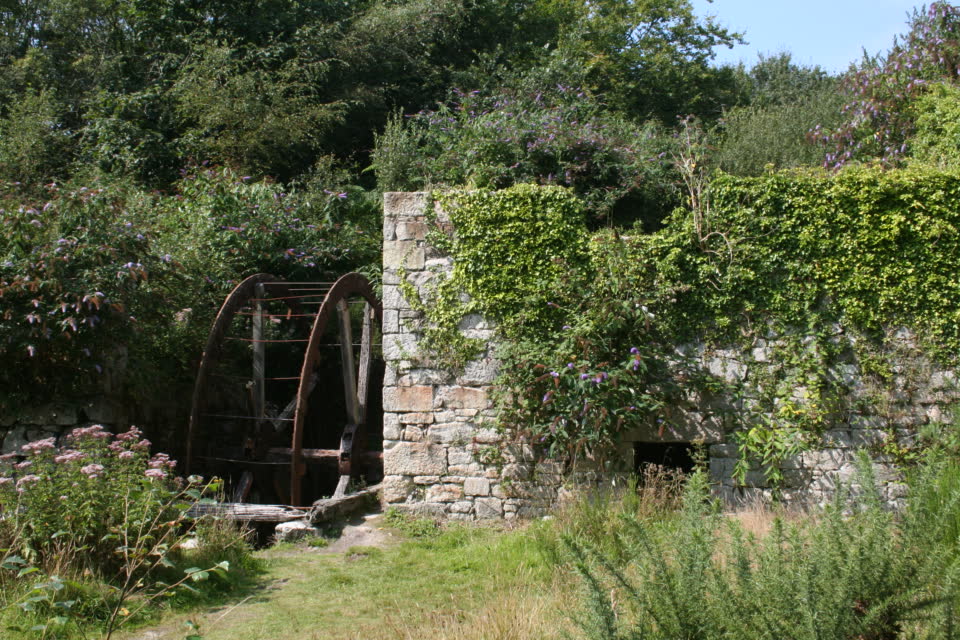
Goonabarn Valley, Grade II Listed China Clay Mill
Cornwall abounds in mills, mines, pits, and quarries, and here at Tregargus Mill lies a once busy china clay workings powered by natural water source and long since closed down.
1965 was the last year of operation and since then, these once considerable mills have slowly but surely reverted back to nature.
The walk through the valley is wooded for the most part and littered with the remains of various pieces of the mill workings. You will come across rusting water wheels, minus their wooden slats, heavy metal rods that once drove the mechanical parts of the mill. Water pits carved out of the valley rock and smaller buildings have collapsed to the point where they cannot be identified as to their original usage.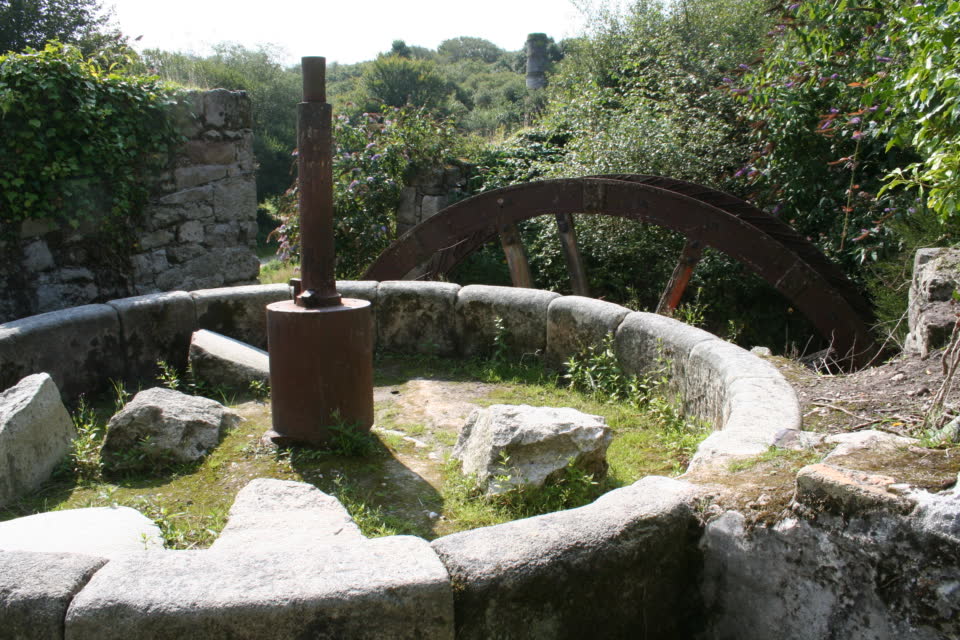
The grinding pit where the clay was broken down into a thick sludge
It is estimated that some 170 million tons of clay were processed since the beginning back in the 1760s with 70% of that being exported. Originally used in ceramics, its usage has spread to paper and pharmaceuticals through to spacecraft components and grow to be bigger economically than copper and tin mining which Cornwall was noted for! Today, there are three main producers where Cornwall was the only one. Number one is Brazil where the largest deposits have been found to date, with the USA coming in second and Cornwall holding 3rd place even now.
Video showing the upper wheel house where the clay was ground to powder
As you walk through this enchanting valley you feel a sense of history around knowing that it was once in the thick of the clay industry providing jobs for locals, and income for families for many years. Even today, many people are still employed by Imerys, who bought the operations back in 1999, and about 2000 people still work in taking this unique material from the grip of mother nature.
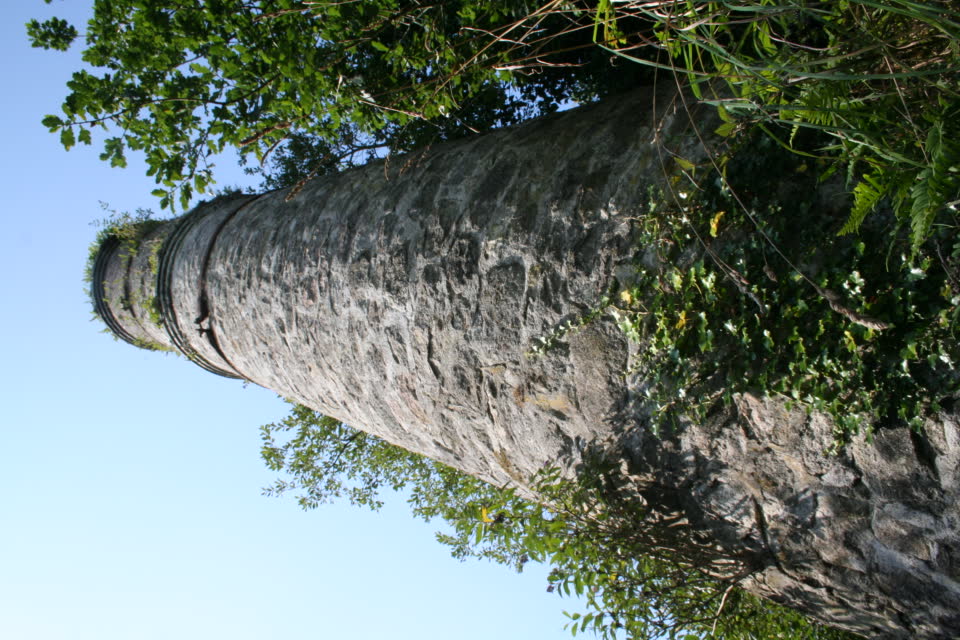
Where once I stood
So proud and tall
Time came along
and caused my fall
I'm not much now
But gave my all
Where once I stood
So proud and tall
You gaze upon
Our ghostly past
The scenes you see
They did not last
For time moved by
And we stood still
Here on the ground
At Tregargus mill
Weep no tears
For times gone by
We gave to those
Who worked our walls
A chance to live
In honest toil
Where once I stood
So proud and tall
Not much I know, but then again, I'm not a poet.
The stream at Goonabarn Valley is part of the origin of the Fal River. It winds its way down through the valley where it once powered the water wheels as it passed.
It is said that the stream was colored white with clay residues all the way down to the sea and people often swam in milky-colored waters off the coast. Today, the stream is crystal clear with rocks strewn along the bed of the stream which has a sandy bed making it a haven for wildlife.
As the signs of the industrial past reveal themselves as you walk further through the valley you wonder what some of the buildings and random pieces of machinery once performed? Without knowing the whole process of separating the clay from the waste spoil, they will remain a mystery, but in the meantime, here is a flow chart of the clay workings.
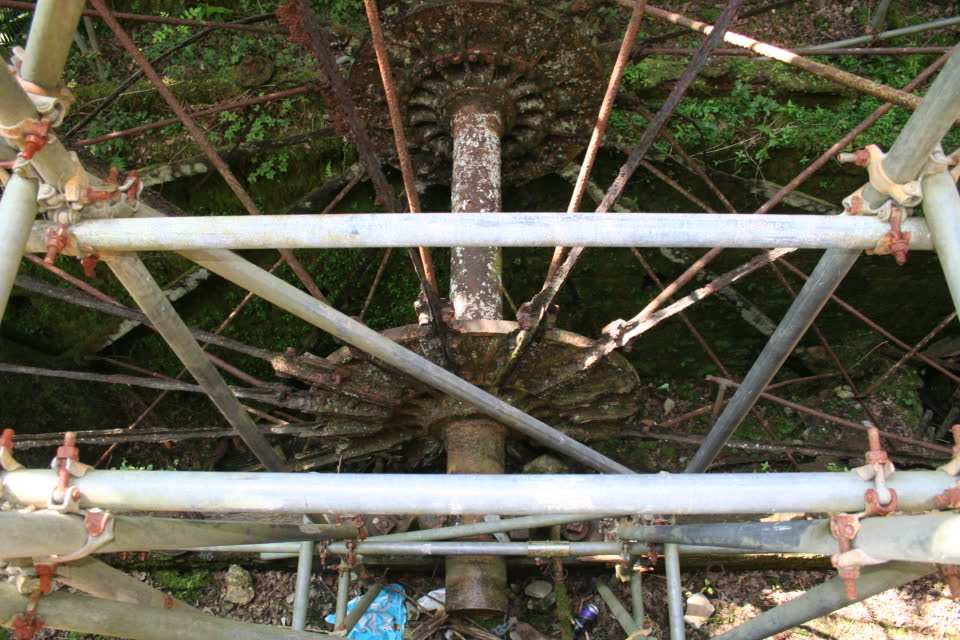
This is the larger of the iron water wheels which were made at the Charlestown Iron Works where much of the clay was put on the ships for transportation.
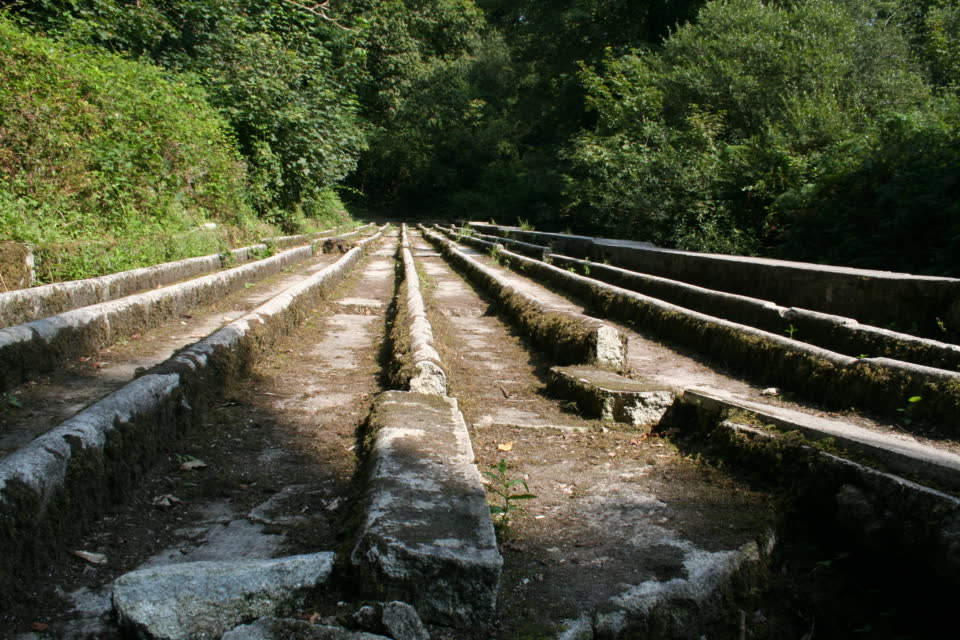
Sand and mica drags now in disrepair and falling apart. Once a hive of activity, now silent and still.
The valley is home to a great variety of trees, shrubs, and plants. In some areas, it has become a little overgrown with the usual culprits such as Blackberry bushes and Ivy. Probably due to the fact that there is little in the way of funding to keep the site in good condition and nature as we know, takes no prisoners.
Dog walking is allowed and I did spot a sign that said all dogs to be kept on a lead, although we saw two people who allowed their dogs to roam free. That said, it is a dangerous site for dogs as there are sudden drops, and maybe wells about?
Also bear in mind that only the top part of the walk is suitable for wheelchair access as it turns into a steeper descent further down the path. The entrance to the walk has a pedestrian gate which makes it impossible to get a wheelchair through and the main gate is kept locked at all times.
There are a few links you can visit regarding this site and I have listed them below;
https://britishlistedbuildings.co.uk/101327465-tregargus-mill-st-stephen-in-brannel
https://historicengland.org.uk/listing/the-list/list-entry/1327465
Photo Gallery for Tregargus Clay Mill - click on photo to enlarge, use side arrows in photo when hovered to browse